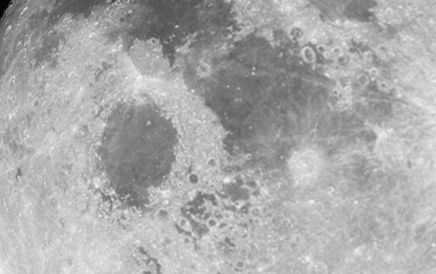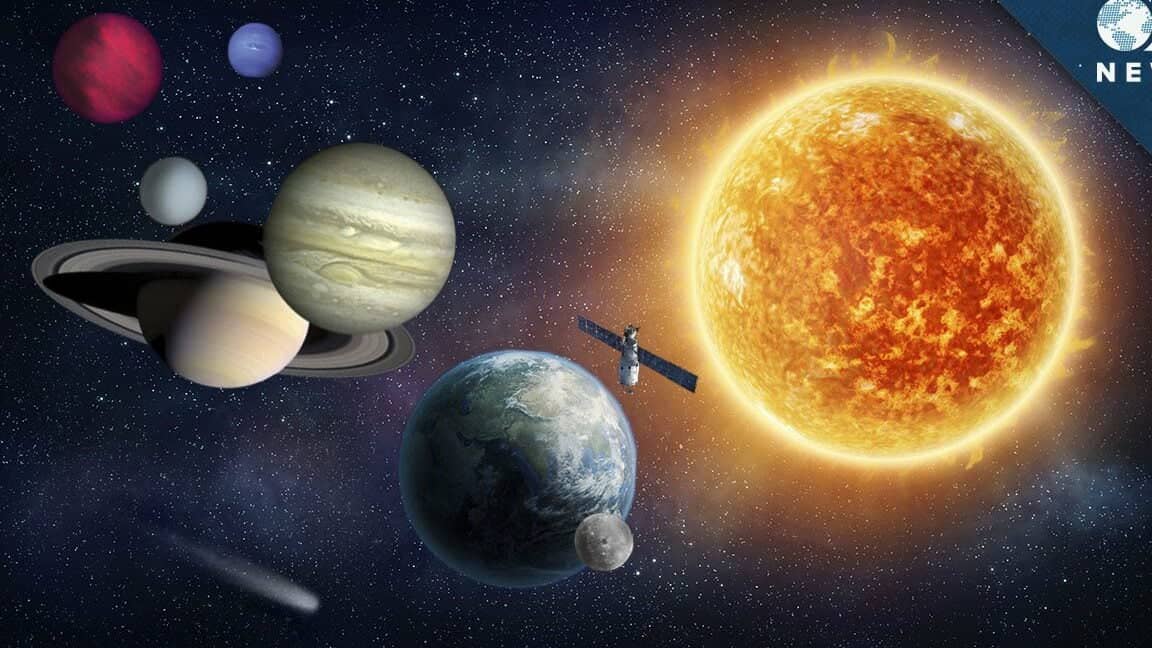The moon serves as Earth’s natural satellite and stands as the sole celestial body in our solar system that has been explored by humans.
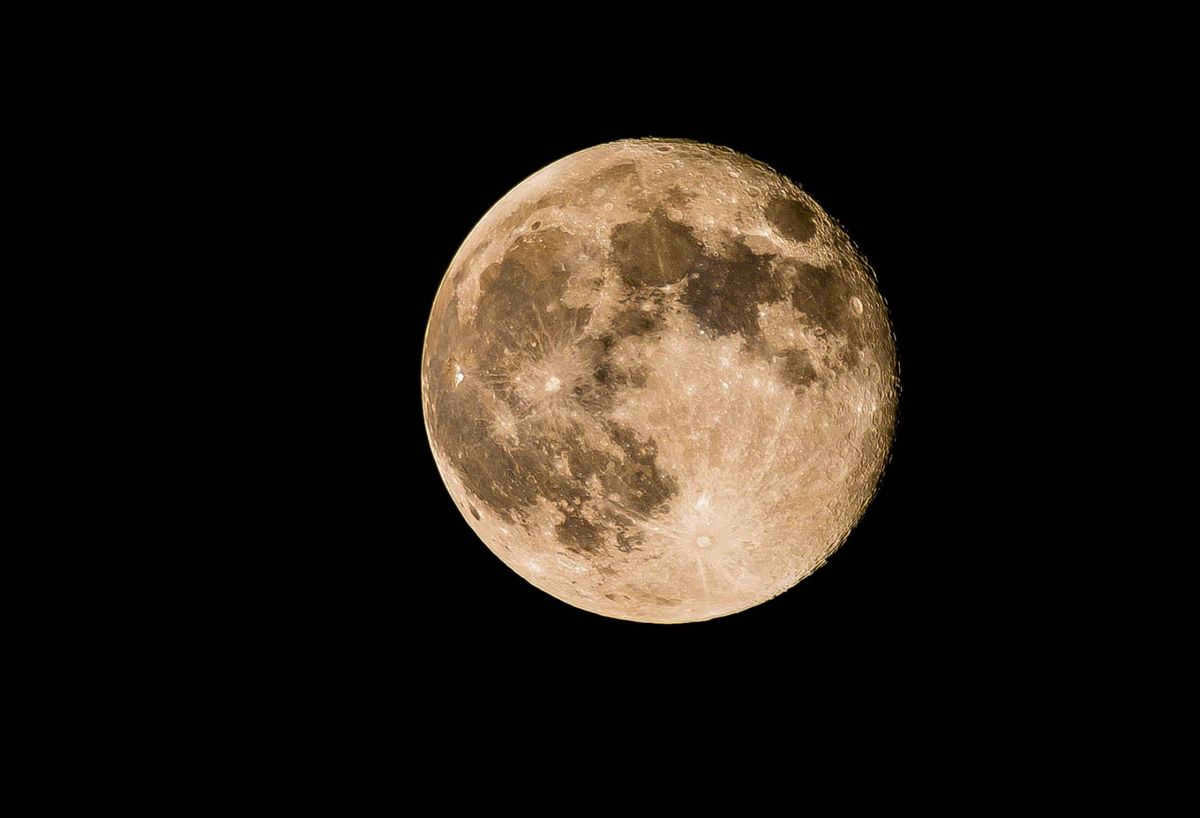
However, despite its close proximity to Earth, there are numerous gaps in our understanding of the moon’s origins. Scientists are still trying to comprehend the nature of the moon, its formation process, and its future trajectory in the coming millions of years.
The presence of Selene (the ancient Greek name for the moon) was acknowledged prior to the invention of sky observing devices. It remains the most prominent object in the celestial sphere. The naked eye can detect the moon from Earth, even on nights with cloud cover.
Galileo Galilei was the first to observe Earth’s satellite with the aid of a telescope. Prior to his discoveries, astronomy was a mathematical discipline, with assumptions about the movement of stars based solely on calculations and statistical tables.
Galileo Galilei formulated his theories regarding the position and orbits of stars in the solar system based on visual evidence. He was the pioneer in sketching, engraving, and presenting the moon’s spots, craters, and irregularities in its topography to the public. It was previously believed to be a smooth, flat sphere, with the dark markings on its surface attributed to a different composition of matter.
The astronomer shared his findings with the world in 1610, marking the beginning of active research on the celestial body.
In 1647, Jan Havelius, a Polish astronomer, provided a detailed account of the moon’s surface. Using a telescope in his observatory in Gdansk, which he funded through brewing, Havelius observed the satellite. His observatory featured an impressive 45-meter long device. In his publication “Selenography, or Description of the Moon,” Havelius included 130 engravings that depicted the moon’s surface, making them the first-ever topographic maps of the object. Additionally, Havelius illustrated the moon in various stages of eclipse and shared his thoughts on its potential orbit.
Theories surrounding the origin of celestial bodies
One hypothesis suggests that the Moon came into existence approximately 4.5 billion years ago due to a collision between the Earth and a massive cosmic entity, potentially a super-sized comet or another planet within our solar system. Japanese astrophysicists have created a simulation depicting a scenario in which a portion of the Earth’s molten material was ejected into space and subsequently solidified. This theory is supported by isotopic analysis of rocks from both the Earth and the Moon, as they exhibit strikingly similar compositions.
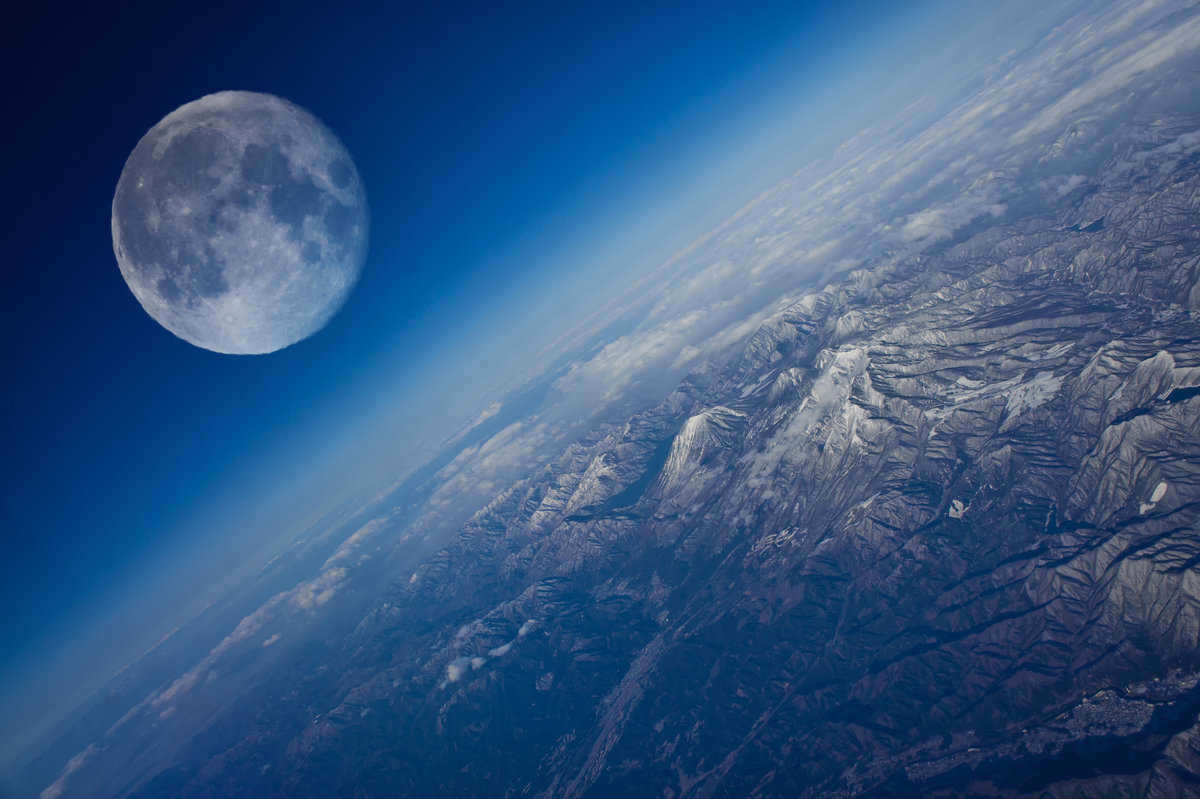
A different viewpoint, proposed by Russian scientists, suggests that both the Earth and its satellite were formed simultaneously from a single cloud of dust. In other words, the satellite was created from particles that remained in space and were held together by the gravitational force of the Earth’s core.
George Darwin, the son of Charles Darwin, put forth a theory that Selene, the Moon, was once a part of the Earth that broke away from it due to centrifugal force. He argued that during the Earth’s early formation, its rotational speed was much higher than it is now.
However, for the Earth to “lose” a piece of lithosphere of such mass, it would have had to rotate on its axis every 2 hours. This is difficult to even imagine in theory.
The Moon is an orb-shaped celestial object devoid of any atmosphere or signs of past or present life. It does not orbit the Earth but instead moves together with it in its orbit around the Sun.
The Moon’s physical characteristics can be described as follows:
– Diameter: 3,480 kilometers
– Radius: 1,738 kilometers
– Surface area: 38 million square kilometers
– Mass: 7.35×10^22 kilograms
– Average density: 3.35 g/cm³
– Axis tilt: 6.68 degrees
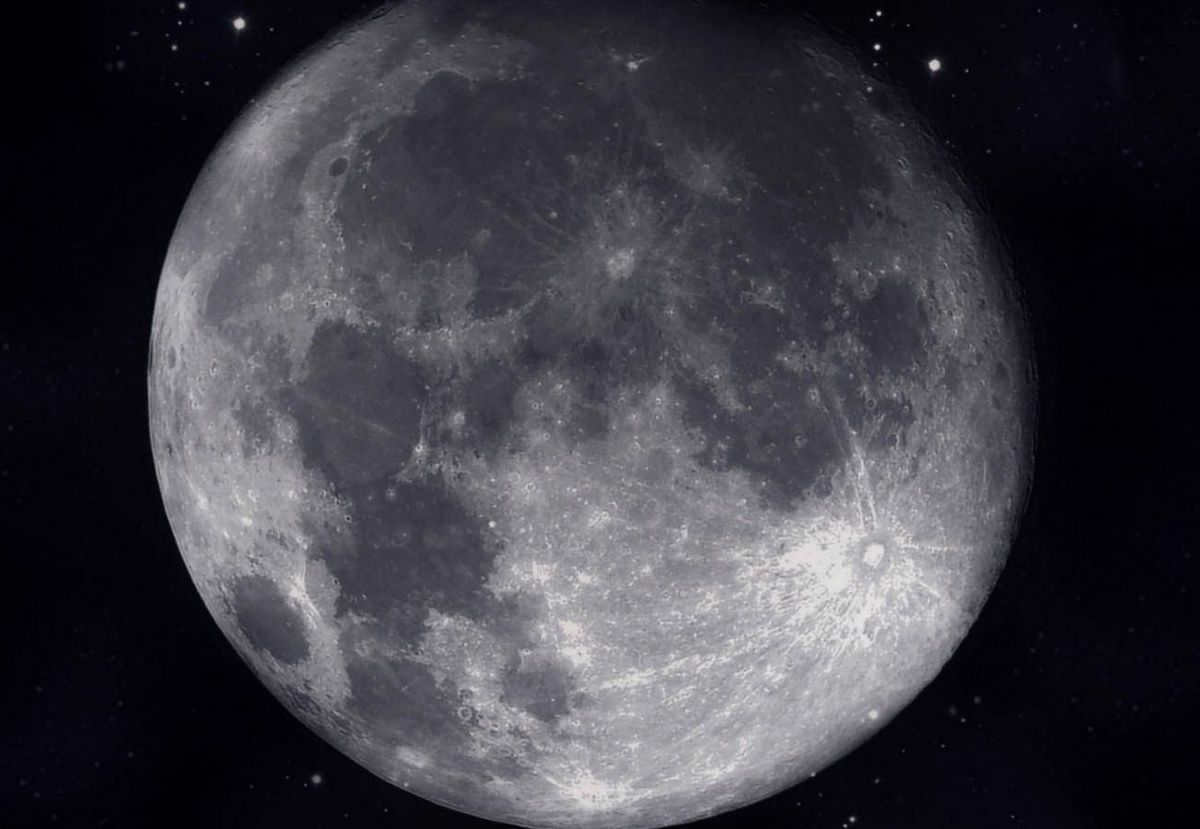
The Moon is covered by a layer of loose clastic material called regolith, which formed as a result of rock weathering and is estimated to be between 4 and 15 meters thick.
Upon studying seismic data collected during the NASA Apollo project, scientists have concluded that the Moon’s internal structure is similar to that of Earth.
Here is a breakdown of the Moon’s geology:
- The crust is approximately 55 kilometers thick.
- The lower mantle contains elements of magma and extends to a depth of about 580 kilometers.
- The outer liquid core measures approximately 350 kilometers in diameter.
- The inner solid core has a diameter of about 160 kilometers.
Spectrographs that have been placed in the craters have identified the existence of pyroxene, ilmenite, and olivine in the lunar soil. These minerals are also found in the Earth’s mantle, where they play a role in rock formation.
Based on this data, the scientists have deduced that the Moon was once a molten ocean. As it cooled, denser materials sank to the center, forming the Moon’s core, while lighter materials rose to the surface, creating the crust.
Characteristics of the satellite’s orbit
The satellite’s orbit around the Earth is a gradual spiral that unwinds over time. This phenomenon occurs because the motion of the satellite is not only influenced by the Earth, but also by the distant Sun.
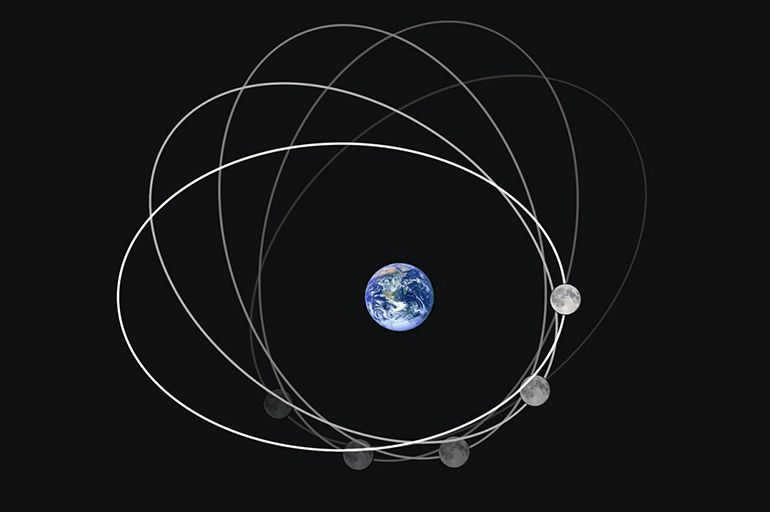
Scientists have determined that the gravitational force between the Earth and the Moon is 2.028×10^20 H, while the Sun’s gravitational force is 4.39×10^20 H, which is nearly twice as much. As a result, the Moon’s orbit is curved towards the Sun at all points.
The stable orbit zone of our planet is 600,000 kilometers. Each year, the Moon moves 4 cm farther away from the Earth.
Currently, the satellite’s orbit is 384.4 thousand kilometers away from Earth. According to some astrophysicists’ calculations, in billions of years, the Moon will eventually leave our planet. This will have an impact on the length of Earth’s day and the temperature of the oceans.
Surface Topography Map
There are three distinct formations that can be observed on the surface of Selene:
- The first type is characterized by basaltic lava-covered regions known as seas;
- The second type consists of cratered areas that are elevated above the surface, commonly referred to as continents;
- Lastly, there are mountain systems and chains that encircle the craters.
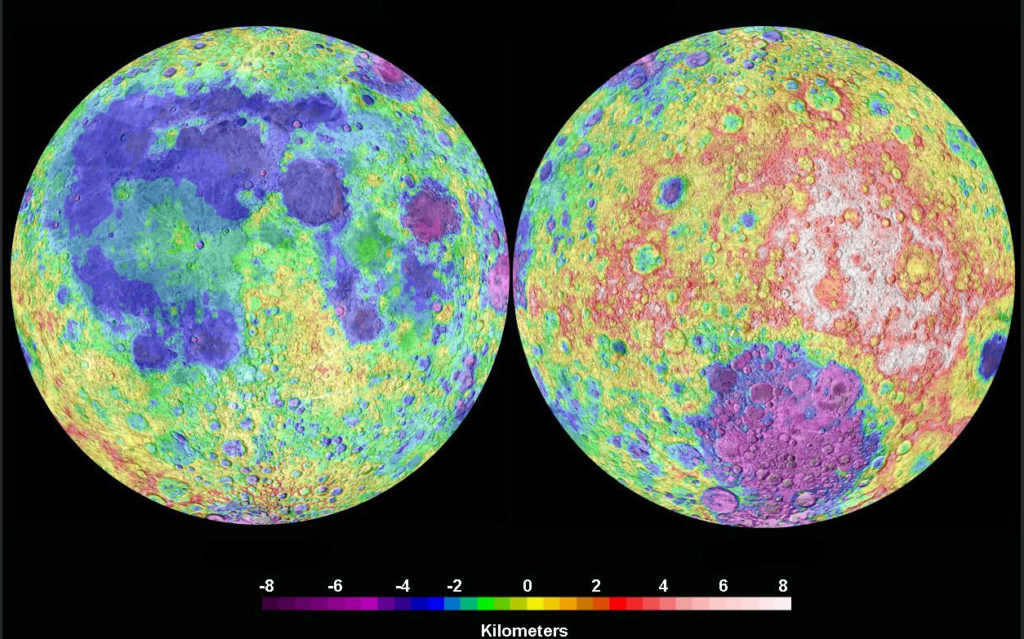
The lunar seas (such as the Sea of Clarity, Sea of Knowledge, Sea of Rain, and Sea of Tranquility) are characterized by their flat, dark-colored surfaces. These seas are easily visible on the moon’s visible side.
Craters, of which there are over 30,000, can be identified by their flat surfaces and gentle walls. These craters are the result of meteorite impacts and can vary greatly in size, with the larger ones reaching up to 240 km in diameter and the smaller ones resembling potholes. As a result, the moon’s surface in photographs often resembles an asymmetrical honeycomb.
Details on the Exploration of the Moon
Back in 1959, the USSR successfully launched the first-ever spacecraft to the Moon. The Luna-1, an automatic interplanetary station, paved the way for lunar exploration. It managed to fly approximately 6 km above the Moon’s surface, providing scientists with valuable information about its gas component and the absence of a magnetic field.
Just eight months later, Luna-2 made history by becoming the first spacecraft to reach the Moon’s surface. This remarkable achievement allowed the station to transmit crucial data about the absence of radiation belts.
The next breakthrough came in October 1959 with the launch of Luna-3. This innovative spacecraft managed to capture images of the Moon’s dark side, which were then successfully transmitted back to Earth for analysis.
The United States also made significant contributions to lunar exploration with their unmanned vehicles Pioneer and Ranger. These vehicles collected invaluable data for a period of eight years, ultimately aiding in the creation of the first-ever lunar globe. In addition to photographs, scientists were able to gather telemetry data on the composition of the Moon’s atmosphere and soil.
In 1969, the surface of the celestial body was first stepped on by a human foot. The individuals responsible for this historic moment were Neil Armstrong, an American astronaut, and Edwin Aldrin, a space engineer.
Apollo 17, the final manned spacecraft to investigate the Moon, embarked on an expedition that lasted nearly 13 days. This mission holds the record for the longest duration of any lunar exploration.
Did You Know?
- Did you know that the largest lunar crater is called Bailey? Unlike other craters, Bailey is located on the back side of the Moon and cannot be seen from Earth.
- Did you know that there is no twilight on the Moon? Unlike Earth, where the transition between day and night is gradual, on the Moon night falls instantly.
- Did you know that the Apollo 6 module delivered 385 kg of lunar soil to NASA’s research center? This soil provided valuable insights into the Moon’s composition and history.
- Did you know that the gravitational force on the Moon is six times less than on Earth? This is why astronauts on the Moon can jump much higher and objects weigh less.
- Did you know that in 1971, the Apollo 15 crew erected a small aluminum monument called “The Fallen Astronaut”? This monument serves as a tribute to the 14 astronauts who lost their lives in the pursuit of space exploration.
- Several lunar rocks brought to Earth by the Apollo 11 mission have mysteriously vanished. On the black market, a shard the size of a fingernail was valued at approximately $5 million.
- A contemporary spacecraft requires approximately 65 hours to reach the surface of the Moon.
- In ancient Egypt, the Moon was referred to as Iyah, while in Babylon it was known as Sin.
The gravitational field of our satellite not only influences the tidal power of the oceans, but also impacts plant growth and even human behavior.
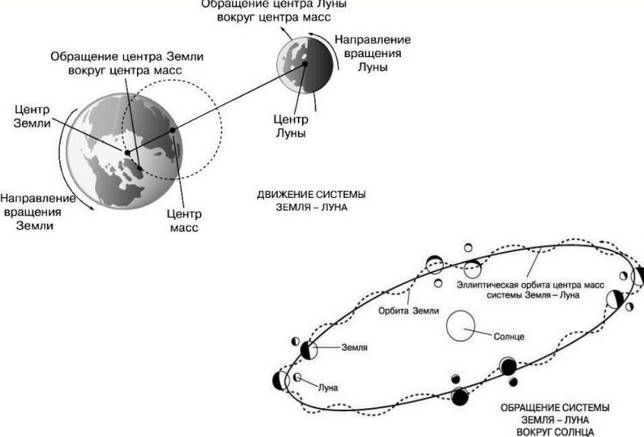
The invention of the telescope is attributed to master craftsman John Lippersguy, who introduced his creation to the world in 1608. This marked a significant milestone in the exploration of space, as it allowed mankind to observe its planet’s celestial satellite in greater detail for the first time. Since then, the Moon has been the subject of extensive research and has even been visited by humans, making it the most studied cosmic body. It holds a special place in human interest, as it is the second most prominent celestial object in our sky after the Sun. Despite its significance, there is still ongoing debate about the Moon’s classification – is it a planet or something else entirely? In this article, we will delve further into this topic and explore the various perspectives.
- There are numerous tales about the moon’s hidden side. In reality, both sides receive equal amounts of sunlight, but only one is visible from Earth. This is because the moon’s axial rotation coincides with its orbital rotation, resulting in only one side facing us at all times. However, we have explored the “dark side” with spacecraft.
- Due to gravity, the moon causes two bulges on Earth. One is on the side facing the moon, while the other is on the opposite side. These bulges give rise to high and low tides across the planet.
- Each year, the moon moves away from us by 3.8 centimeters. If this continues, in 50 billion years, the moon will simply drift away. At that point, it will take 47 days to complete one orbit.
- The gravitational force on the moon is weaker than that on Earth, resulting in a 1/6 reduction in weight for individuals on the satellite. This is why astronauts had to move by hopping, similar to kangaroos.
- Neil Armstrong was the first person to set foot on the moon during the Apollo 11 mission in 1969, while Eugene Cernan was the last in 1972. Since then, only robotic missions have been sent to the moon.
- As depicted in the photo, the moon’s surface lacks protection from cosmic radiation, meteor impacts, and solar wind. It also experiences extreme temperature fluctuations. Additionally, there is no sound and the sky always appears black.
- Due to Earth’s gravitational pull, the moon has formed cracks and fractures several kilometers below its surface. Scientists have used seismographs to study these features and believe that the moon has a molten core.
- The Soviet Luna-1 spacecraft was the first to explore the Moon. It flew past the Moon at a distance of 5995 km and then entered orbit around the Sun.
- The Moon, Earth’s satellite, has a diameter of 3,475 kilometers. Despite being 80 times smaller than Earth, the Moon and Earth are believed to be around the same age. The prevailing theory suggests that a massive object collided with Earth in its early stages, ejecting material into space.
- NASA has plans to establish a colony on the lunar surface to ensure a constant human presence. The project could potentially commence as early as 2019.
- Project A119, also known as a secret Cold War project, aimed to demonstrate a significant advantage for one of the countries involved.
Physical characteristics of the Moon
- Moon surface temperature varies from -173 °C during the night to +127 °C at sunrise. Rocks at a depth of 1 meter maintain a constant temperature of -35 °C.
- The Moon has an average radius of 1,737.1 kilometers, which is approximately 0.273 times the radius of the Earth.
- The surface area of the Moon is 3.793 x 107 square kilometers.
- The average density of the Moon is 3.3464 grams per cubic centimeter.
- The Moon’s acceleration of free fall is 1.62 meters per second squared (0.165 g).
- The mass of the Moon is equal to 7.3477 x 1022 kilograms.
Size, mass, and orbit
It is important to examine the characteristics and parameters of the Moon. With a radius of 1,737 kilometers and a mass of 7.3477 x 10
kg, it is smaller and less massive than our own planet. However, when compared to other celestial bodies in the solar system, it is relatively large (ranking second after Charon). Its density is 3.3464 g/cm
(second among moons after Io), and it has a gravity of 1.622 m/s.
The Moon has an eccentricity of 0.0549, and its orbit covers a range of 356,400 – 370,400 km (at perihelion) and 40,400 – 406,700 km (at aphelion). It takes 27.321582 days for the Moon to complete one orbit around the Earth. Additionally, the Moon is tidally locked, meaning that it always presents the same face towards us.
Characteristics of the Moon’s physical appearance
Variations in the Moon’s observable shape
Due to its spherical shape, the Moon appears as a crescent when it is partially illuminated. The illuminated side of the Moon always faces the direction of the Sun, even when it is below the horizon.
The length of time it takes for the Moon to go through its complete phases (known as the synodic month) can vary due to the elliptical shape of its orbit. On average, the synodic month lasts 29 days, 12 hours, 44 minutes, and 2.82 seconds.
During the phases of the Moon that are near the new moon (at the start of the first quarter and at the conclusion of the last quarter), the unilluminated portion of the Moon forms what is known as the ash light of the Moon. The ash light of the Moon refers to the visible radiance on the surface of the Moon, which has an ash-colored appearance and is not directly illuminated by sunlight.
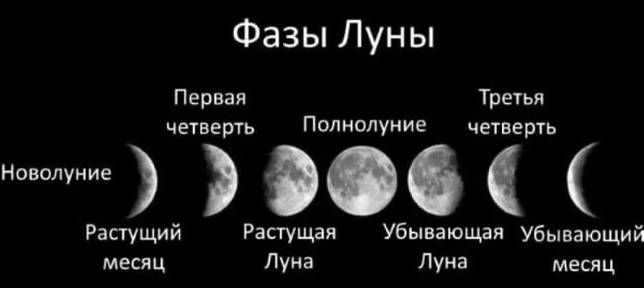
The Moon experiences various stages of illumination:
- New Moon – the phase when the Moon is not visible.
- Crescent Moon – the first appearance of the Moon in the sky after the New Moon, taking on the shape of a narrow sickle.
- First Quarter – the phase when half of the Moon is illuminated.
- Waxing Moon – the phase when the illuminated portion of the Moon is increasing.
- Full Moon – the phase when the entire Moon is illuminated.
- Waning Moon – the phase when the illuminated portion of the Moon is decreasing.
- Last Quarter – the phase when half of the Moon is illuminated again.
- Old Moon – the phase when the Moon is no longer visible in the sky.
Usually, there is typically one full moon per calendar month. However, due to the moon’s phases changing slightly faster than 12 times a year, there are occasions when a second full moon occurs within a month, known as a blue moon.
A helpful rule for determining moon phases
To differentiate between the first quarter and the last quarter, an observer in the northern hemisphere can use the mnemonic rules provided. If the moon’s sickle in the sky resembles the letter “C,” then it is an aging or waning moon, indicating it is in the last quarter. Conversely, if the sickle is turned in the opposite direction and mentally transformed into the letter “P,” it represents a growing moon, signifying the first quarter.
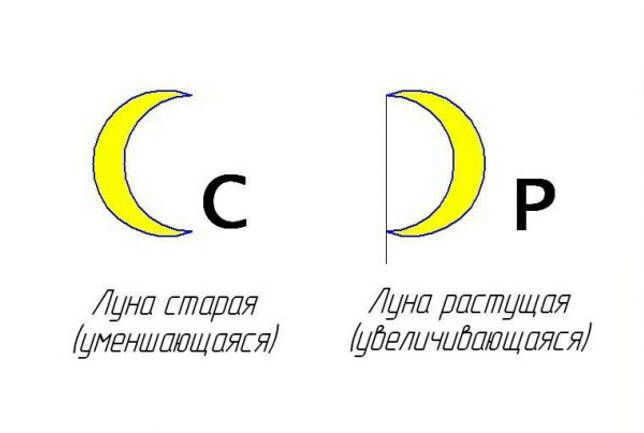
The phase of the Moon can be determined by observing it during different times of the day. The Moon appears to grow in size during the evening, while it appears to decrease in size during the morning.
It’s important to note that when observing the Moon near the equator, it will always appear “lying on its side,” making this method unsuitable for determining the phase.
In the southern hemisphere, the orientation of the crescent shape during different phases is opposite to that of the northern hemisphere. A waxing Moon (from new moon to full moon) appears like the letter “C,” while a waning Moon (from full moon to new moon) appears like the letter “D” without the stick.
To determine whether the Moon is waxing or waning, observe the direction of its movement. If the front edge is illuminated, it is waxing. If it is shaded, it is waning.
The Earth-Moon system
The movement of the moon around the Earth is not entirely accurate. In fact, both of these celestial bodies orbit around a common center of mass, which is located beneath the Earth’s surface. After analyzing the Earth’s oscillations, it has been determined that the Moon’s mass is 81 times less than that of the Earth.
Tidal effects on Earth are caused by the gravitational pull of the Moon.
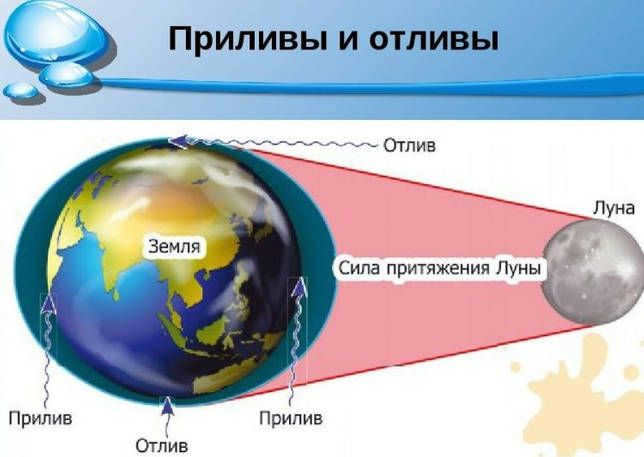
Tidal movements resulting from friction are causing a gradual slowing down of the Earth’s rotation, which leads to an increase in the length of the Earth’s day by 0.001 seconds per century.
As a result of this slowing rotation, the Moon is also affected and gradually moves away from the Earth. However, due to the complex interactions between the Sun, planets, and Earth, the distance between the Earth and the Moon is actually decreasing at a rate of 2.5 centimeters per year in the present epoch.
The Moon always presents the same face to the Earth.
A deceptive phenomenon of the Moon
The Moon deceivingly appears significantly larger near the horizon compared to its size when it is positioned higher in the sky. This intriguing occurrence is purely an optical illusion.
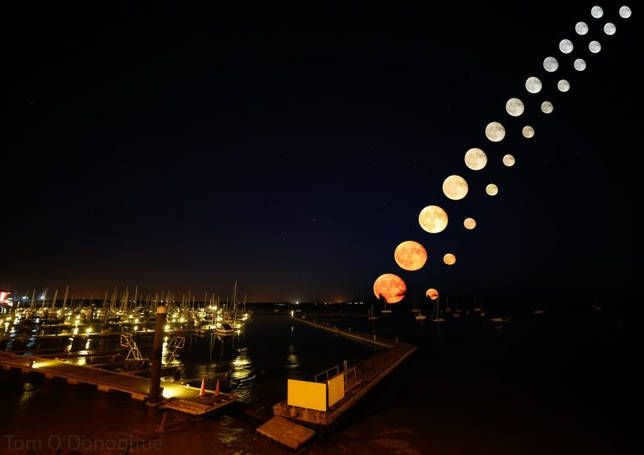
According to psychological experiments, the subconscious mind of the observer creates its own perception of an object’s size based on the surrounding objects. As the Moon appears higher in the sky, it is perceived to be smaller due to the vast empty space. However, as it gets closer to the horizon, its size becomes comparable to the distance from the Moon to the horizon, which unconsciously reinforces the perception of its size.
Composition and structure
The Moon bears resemblance to the Earth and possesses an inner and outer core, mantle, and crust. The core is a solid sphere of iron that stretches for 240 kilometers. Surrounding it is a concentrated outer core consisting of liquid iron, spanning 300 kilometers.
Next is a semi-molten layer that extends for 500 kilometers. It is believed to have formed as a result of the crystallization of a global magma ocean approximately 4.5 billion years ago. This process led to the creation of a mantle containing magnesium and iron.
The mantle also contains igneous rocks with a higher iron content compared to our own. The crust extends for 50 kilometers. The core makes up only 20% of the entire entity and contains not only metallic iron but also small traces of sulfur and nickel. The diagram provides a visual representation of the Moon’s structure.
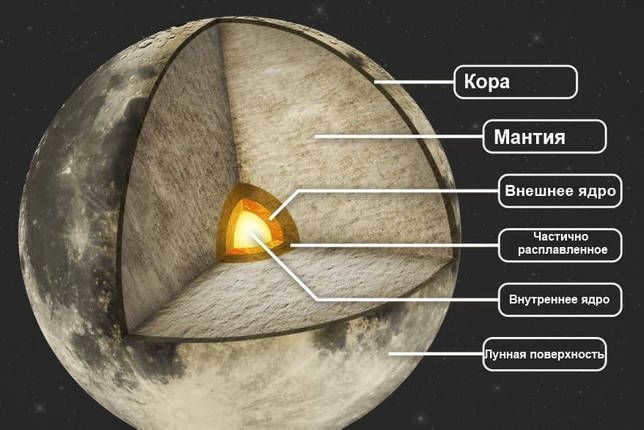
The presence of water on the moon has been confirmed by scientists, with the majority of it being found in shaded crater formations and underground reservoirs near the poles. It is believed that the water came from the moon’s interaction with the solar wind.
The geology of the moon is quite different from that of Earth. Due to its lack of a dense atmosphere, there is no weathering or wind erosion. Additionally, its small size and low gravity result in rapid cooling and a lack of tectonic activity. The moon is covered in numerous craters and volcanoes, as well as ridges, wrinkles, highlands, and depressions.
The most noticeable difference is observed in the contrast between the illuminated regions and the shaded areas. The illuminated regions are commonly referred to as lunar uplands, whereas the darker regions are known as seas. The uplands were created by igneous rocks that predominantly consist of feldspar, along with small amounts of magnesium, pyroxene, iron, olivine, magnetite, and ilmenite.
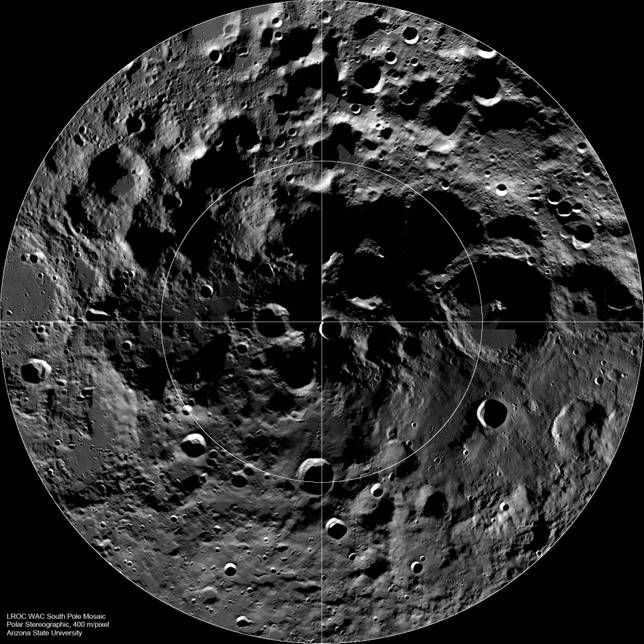

The lunar South Pole region was observed by the LROC camera, covering an area of 600 kilometers
The lowlands of the moon often coincide with basaltic rock underlying the seas. Notable features are the presence of canals, which can be arc-shaped or linear. These canals are actually lava tubes that have cooled and collapsed over time during periods of volcanic inactivity.
An intriguing characteristic of the moon is the presence of moon domes, formed by the eruption of lava through vents. These domes have gentle slopes and range in diameter from 8 to 12 kilometers. The wrinkles seen on the moon’s surface are a result of tectonic plate compression and are most commonly found in the lunar seas.
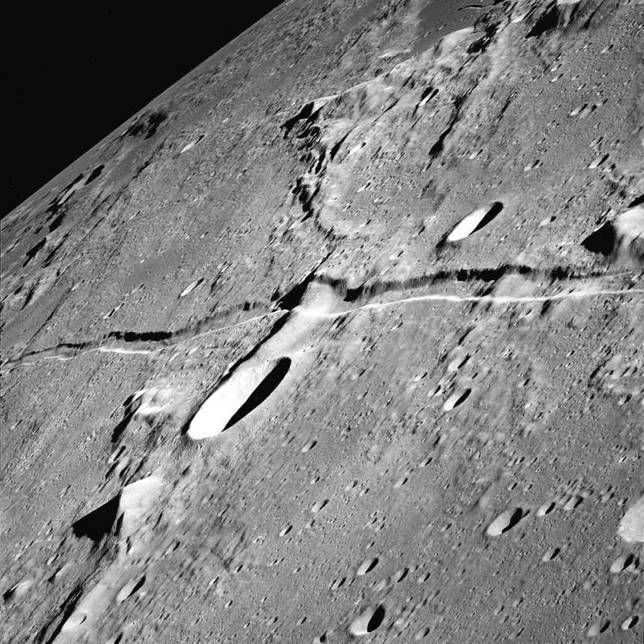
Ariadeus furrow, which was captured during the Apollo 10 mission, showcases an intriguing sight on our moon. The upper right portion displays a dark area that encompasses half of the Boscovich crater.
One fascinating aspect of our celestial satellite is the presence of impact craters, which form when large extraterrestrial rocks plummet to the surface. The immense kinetic energy generated from the impact results in a shock wave that creates a depression and ejects a substantial amount of material.
These craters vary in size, ranging from small pits to colossal formations measuring up to 2500 km in diameter and 13 km in depth (like the Aitken crater). The largest craters emerged in the early history of the moon, and over time, they started to diminish in size. In total, around 300,000 depressions with a width of 1 km can be found on the lunar surface.
Another intriguing aspect is the lunar soil, which originated from the collisions of asteroids and comets billions of years ago. These cosmic rocks disintegrated into fine dust particles, which subsequently blanketed the entire moon’s surface.
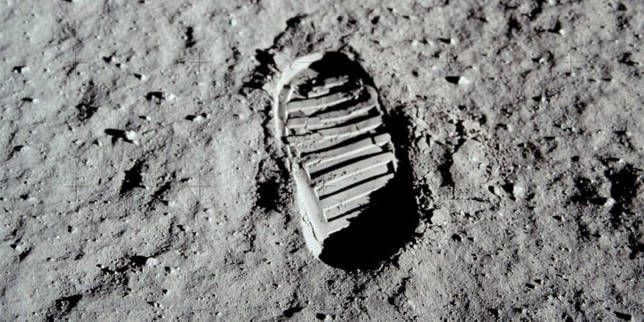

A capture of an iconic footprint left behind by the Apollo 11 astronauts.
The composition of the regolith varies depending on the location. The mountains contain abundant amounts of aluminum and silicon dioxide, while the lunar seas are rich in iron and magnesium. The geological characteristics of the moon were thoroughly examined through not only telescopic observations, but also by analyzing samples.
What is the significance of a planet?
In the field of astronomy, a planet is a celestial object that revolves around a star. It possesses sufficient gravitational forces to assume a spherical shape, but lacks the necessary mass for fusion reactions. While the majority of these cosmic entities consist of dense materials, there exist certain planets known as gas giants, which are predominantly composed of helium, hydrogen, and methane.
Every planet initially emerged in a liquid state. Over time, heavier elements settled at its core, giving rise to a solid core, while lighter elements remained on the surface.
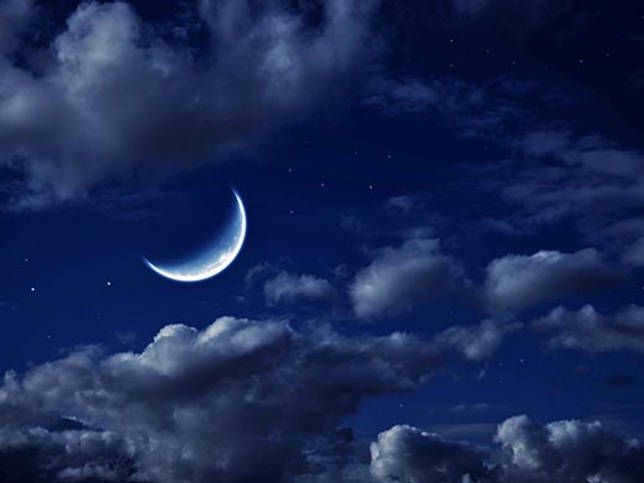
In general, the Moon possesses all of these characteristics, meaning it is composed of dense materials, has a spherical shape, and contains an iron-rich core. However, there are certain distinctions that set it apart from a planet. Firstly, the Moon’s inner core is relatively small and exhibits a weak gravitational force.
While most planets have a core radius that comprises approximately 50% of their overall size, the Moon’s core radius only accounts for around 20%. Secondly, a key trait of a planet is its ability to clear its orbit of other celestial objects. The Moon lacks this capability, resulting in periodic collisions with sizable space bodies and debris. Consequently, the Moon cannot be classified as a planet.
The Lunar Orbit
- Perigee (the point in the orbit closest to Earth): 363,104 kilometers (varies between 356,400 and 370,400 kilometers).
- Apogee (the point in the orbit farthest from Earth): 405,696 kilometers (varies between 404,000 and 406,700 kilometers).
- The average speed at which the Moon orbits the Earth is approximately 1,023 kilometers per second.
- The Moon orbits around the Earth in an elliptical trajectory with a duration of 27.3 days, gradually moving away from it due to tidal acceleration at a rate of 38 millimeters per year, thus forming a slowly unwinding spiral.
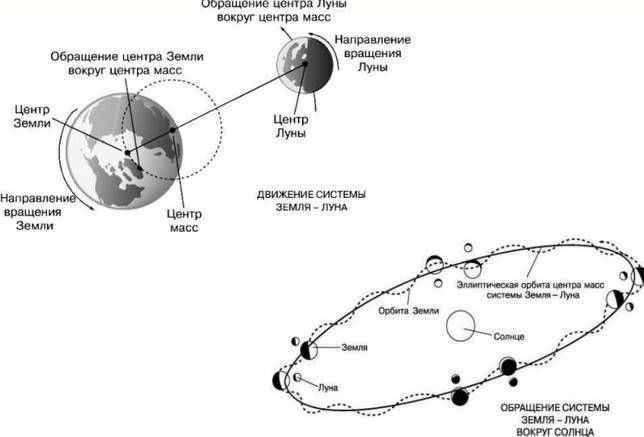
What sets the Moon, planets, and stars apart
While the moon, stars, and planets are all celestial objects, they differ in their nature and characteristics. Although they all exhibit rotation and motion, the specifics vary.
It is important to note that the Earth not only rotates on its axis but also orbits around the Sun. This is a defining characteristic of planets and how the solar system operates. This fundamental distinction is what distinguishes a satellite from being classified as a planet.
Similar distinctions can be made regarding stars. They do not orbit around planets and, unlike other objects, they undergo thermonuclear reactions. As a result, the moon cannot be considered a star.
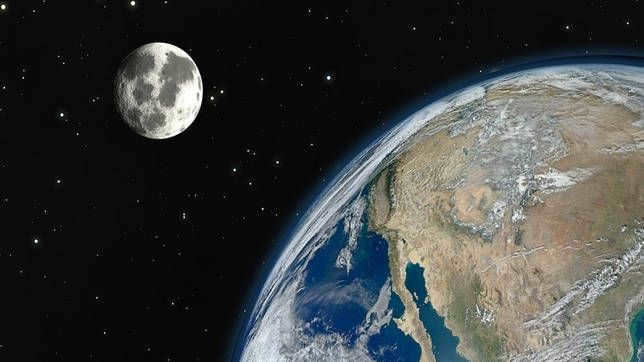
Earth and the Moon
Interestingly, the Moon is the second most luminous object visible from Earth, after the Sun. This is primarily because Earth’s satellite is in close proximity. As our main star always shines next to us, the Moon also shines in its vicinity.
Origin
The moon is a familiar sight in the night sky, but few people consider its origin. Many believe that the moon has always existed. However, the origin of our natural satellite remains one of the most important mysteries. Currently, there are several theories regarding its origin, each with its own supporting evidence and counterarguments. Based on available data, three main official hypotheses about the moon’s origin can be identified:
- The moon and Earth formed from a single protoplanetary cloud.
- The moon’s formation was the result of a collision between Earth and a large celestial body.
- The moon was a fully formed satellite that was captured by Earth.
Map of the earth’s surface
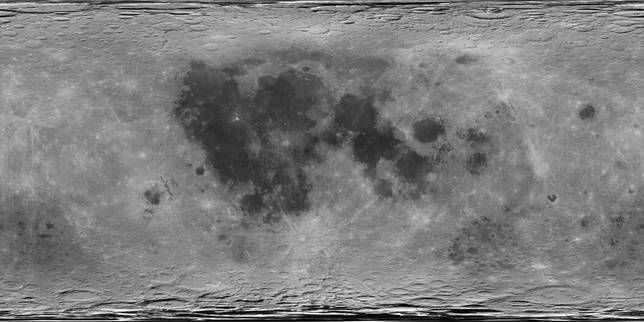
Click the image to enlarge it
- Fascinating moon trivia;
- What exactly is the Moon?
- The origin of the Moon;
- How was the Moon created?
- Constructing a Lunar Base: Part 1
- Constructing a Lunar Base: Part 2
- Constructing a Lunar Base: Part 3
- Constructing a Lunar Base: Part 4
- Can the moon be destroyed?
- How do we know the moon landing wasn’t a hoax?
- Is the Moon essential for our survival?
- How to profit from the moon?
- How did NASA document the return of astronauts from the moon?
- Which is a better destination: Mars or the Moon?
- Isn’t it time to return to the Moon?
The position and movement of the Moon can be explained through various factors and phenomena. Some of these include:
Satellites within the Solar System
The Concept of a Star: A Unique Perspective
When discussing stars, astronomers commonly describe them as colossal spheres of gas that emit radiant light and maintain stability through the gravitational forces acting upon them. Deep within these celestial bodies, a fascinating process known as thermonuclear fusion unfolds, with temperatures soaring into the millions of kelvins.
Typically, stars are characterized by their expansive diameters and substantial masses. Comprising mostly lightweight elements, these stellar entities possess a composition that is often less weighty than that of helium. In contrast, the moon boasts a spherical shape and is predominantly composed of heavier elements like magnesium, titanium, silicon, iron, and sodium. Unlike stars, the moon lacks any observable thermonuclear reactions and experiences temperature fluctuations ranging from -160 to +120 degrees Celsius.
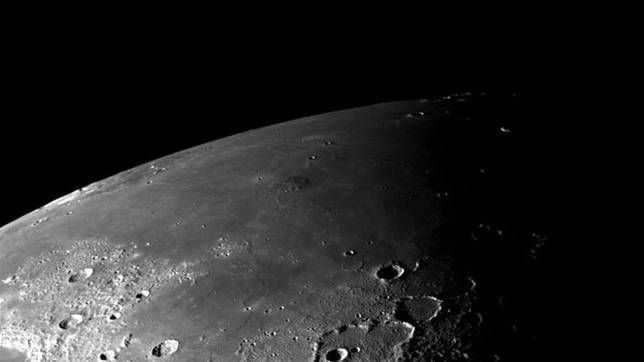
Satellite Explanation
After discussing whether the Moon is a planet or a star, let’s now explore the concept of satellites. Satellites refer to objects that orbit around other celestial bodies along a specific path. Their movement is governed by the force of gravity. It’s important to note that the satellite’s orbit can either be dynamic or fixed.
A celestial object can become a satellite only if it was ensnared by the gravitational pull of its cosmic neighbor while traveling through space, or if it originated from the same gas-dust cloud from which the planet itself was born. Now, what can be said about the night-time illuminator? The Moon does revolve around our planet, but its origin story is slightly different. It is theorized that over four billion years ago, Earth, which was still a protoplanet at the time, collided with a similar object known as Teia in outer space.
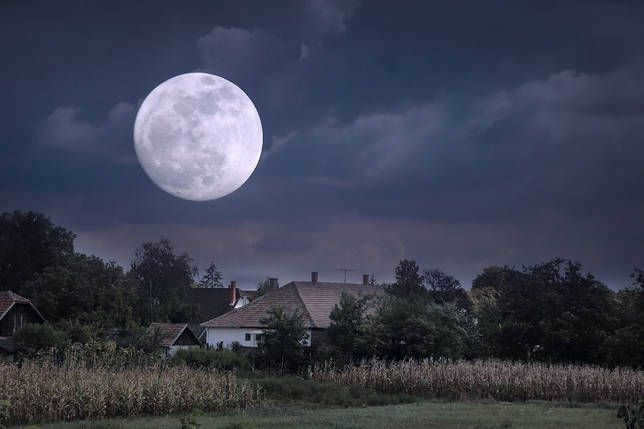
The Moon’s origin is believed to be the result of a tangential collision, which caused a significant amount of debris to be thrown into Earth’s orbit. This debris eventually came together to form the Moon. Despite its unique history, astronomers classify the Moon as a satellite of the Earth.
If someone were to ask, “Is the Moon a satellite or a planet?”, you can confidently answer that the Moon is indeed a satellite of the Earth.
Overview of the Moon
The Moon is a celestial object that has been in close proximity to Earth for centuries. While it does not emit its own light, it has the ability to reflect light. In our nation, it is considered to be Earth’s satellite, as we discussed earlier, and is the closest one to the Sun. In terms of brightness in the night sky, the Moon is the second brightest object after the Sun. Humanity has only ever observed one side of the Moon, as its rotation is synchronized with Earth’s rotation on its axis. It follows an irregular path around our planet, sometimes moving farther away and other times getting closer. Many astronomers have dedicated significant effort to unraveling the mysteries of its movements. This process is incredibly intricate and is influenced by factors such as Earth’s flattening and the gravitational pull of the Sun.
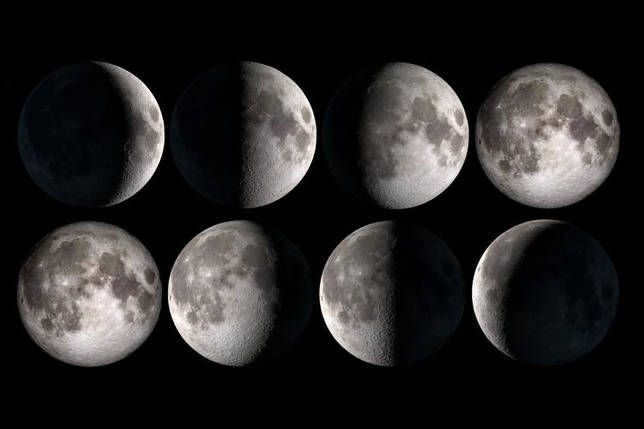
Luna – the sole satellite of Earth. It is also the solitary celestial body (excluding Earth) to have been touched by human feet.
Crust [ ]
The crust of Luna is adorned with impact craters.
Gravitational Force [ ]
The Moon’s gravitational potential is commonly expressed as the combination of three components:
Here, δW represents the tidal potential, Q refers to the centrifugal potential, and V denotes the attraction potential. The attraction potential can be further broken down into zonal, sectoral, and tesseral harmonics:
where Pn m signifies the associated Legendre polynomial, G stands for the gravitational constant, M represents the mass of the Moon, and λ and θ represent the longitude and latitude, respectively.
Tidal Movements on Planet Earth
The gravitational pull of the Moon has some fascinating effects on Earth. One of the most well-known effects is the formation of sea tides. Two bulges are created (approximately) on opposite sides of the Earth – one on the side facing the Moon and another on the side opposite to it. This phenomenon is much more prominent in the global ocean than in the solid crust (the water bulge is larger). The amplitude of tides (the difference in tidal level) in the open ocean is relatively small, around 30-40 cm. However, near coastlines, the tidal wave increases in height, similar to regular wind-driven surf waves, due to the tidal wave crashing onto the hard ocean floor. By considering the Moon’s orbit around the Earth, we can visualize a tidal wave traveling across the ocean. The eastern coasts of continents are more susceptible to powerful tides. The highest tidal wave amplitude on Earth is observed in the Bay of Fundy in Canada, reaching an impressive 18 meters.
Investigation of the Moon
The Moon has captivated human interest for centuries. As early as the 2nd century BC, Hipparchus conducted research on the Moon’s movement across the celestial sphere. He discovered the inclination of the lunar orbit in relation to the ecliptic, calculated the size and distance of the Moon from the Earth, and uncovered various peculiarities in its motion.
The advent of telescopes enabled the discernment of more intricate features of the Moon’s topography. In 1651, Giovanni Riccioli produced one of the earliest lunar maps, wherein he designated the vast dark regions as “seas”, a nomenclature still employed today. These appellations reflected the longstanding belief that the lunar weather resembled that of Earth, and that the dark regions purportedly contained lunar water, while the light regions were deemed arid land. However, in 1753, Croatian astronomer Rudjer Bošković definitively established that the Moon lacks an atmosphere. The crux of the matter lies in the fact that when stars are obstructed by the Moon, they instantaneously vanish. Conversely, if the Moon possessed an atmosphere, the stars would gradually fade away. This implies that the Moon is devoid of an atmosphere. Consequently, liquid water cannot exist on the Moon’s surface as it would swiftly vaporize.
Thanks to Giovanni Riccioli, famous scientists like Plato, Aristotle, and Archimedes had craters on the Moon named after them. This practice continued with more modern scientists like Vernadsky, Tsiolkovsky, and Pavlov.
A significant advancement in lunar studies came with the introduction of photography in astronomical observations during the 19th century. This allowed for a more detailed analysis of the Moon’s surface through high-quality photographs. Notable photographers during this time included Warren de la Rue in 1852 and I. Lewis Rutherford in 1865. In 1881, Pierre Janssen compiled a comprehensive “Photographic Atlas of the Moon.”
![]()
Mercury, Venus, Earth, Mars, Ceres, Jupiter, Saturn, Uranus, Neptune, Pluto • Contenders: Sedna • Orcus • Quavar • Large
Moon, Io, Satellites /
Earths • ∅ • ∅ • ∅ • ∅ •
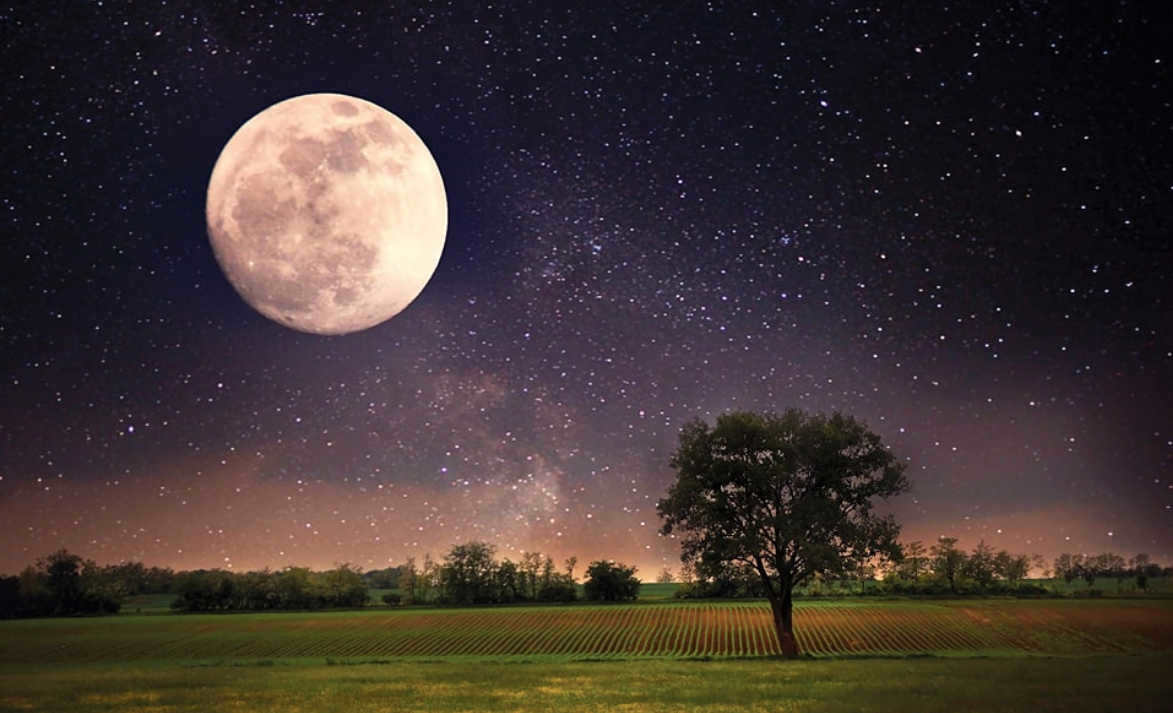
The Moon is commonly recognized as a natural satellite orbiting the Earth. Further details regarding the physical appearance of this celestial body will be elaborated in the following discourse.
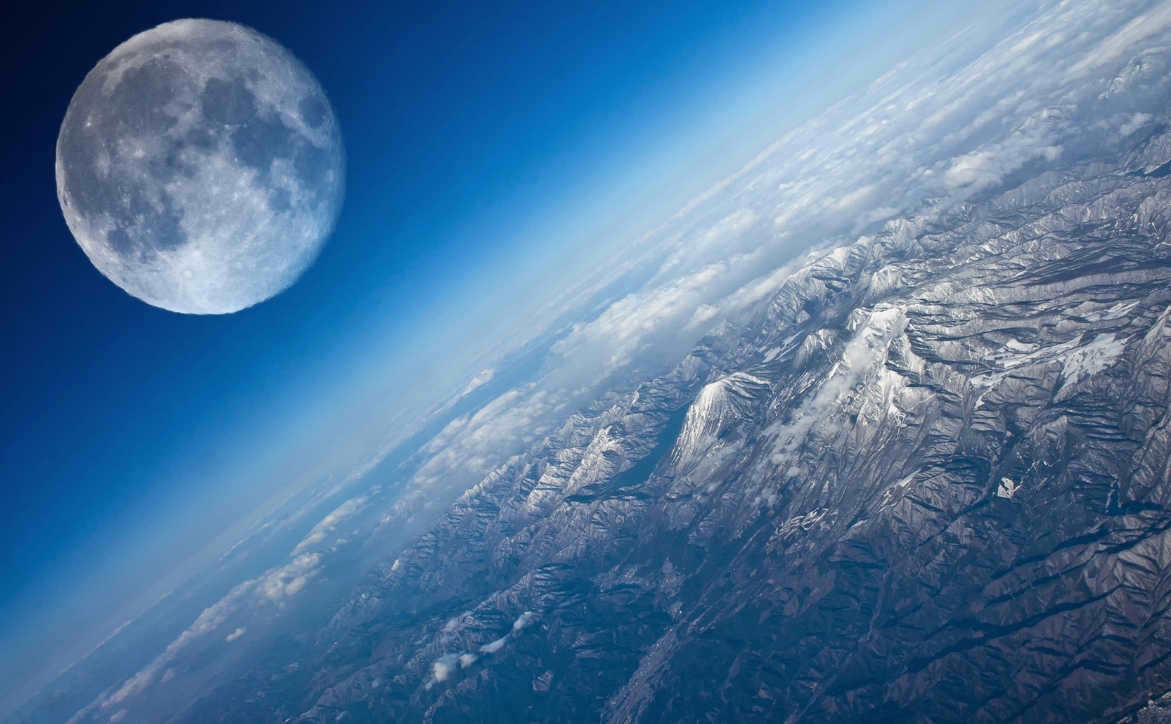
Overview
To reiterate, the moon is Earth’s sole natural satellite and also the nearest satellite to the Sun. It is worth noting that Mercury and Venus, the two other planets in our solar system, lack any satellites of their own.
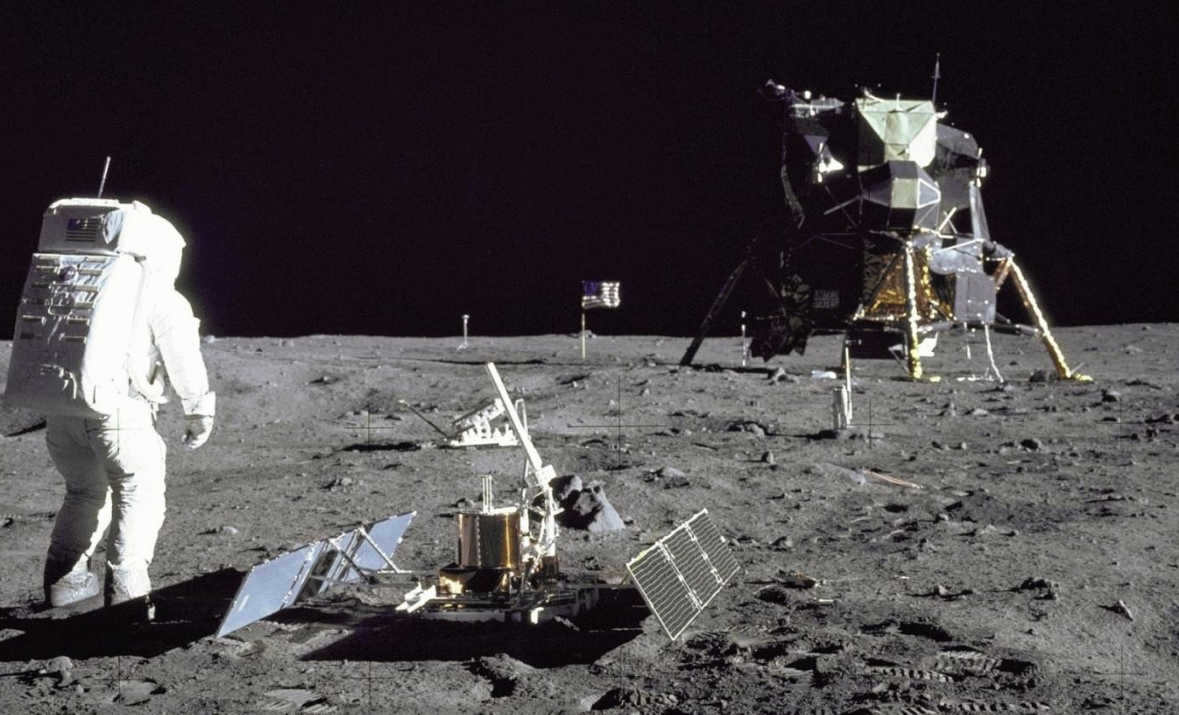
The Moon is primarily comprised of various types of mantle materials:
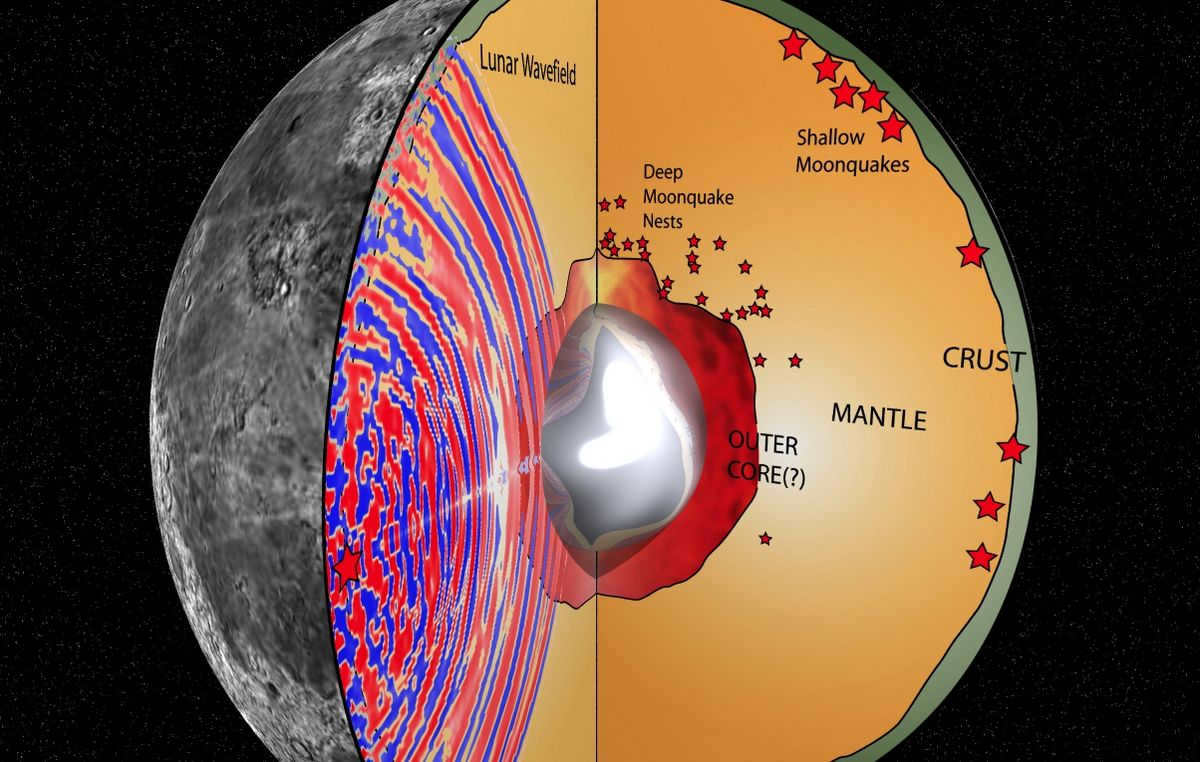
The Moon’s surface is entirely covered by regolith, a combination of dust and rock fragments that are created by the impact of meteorites.
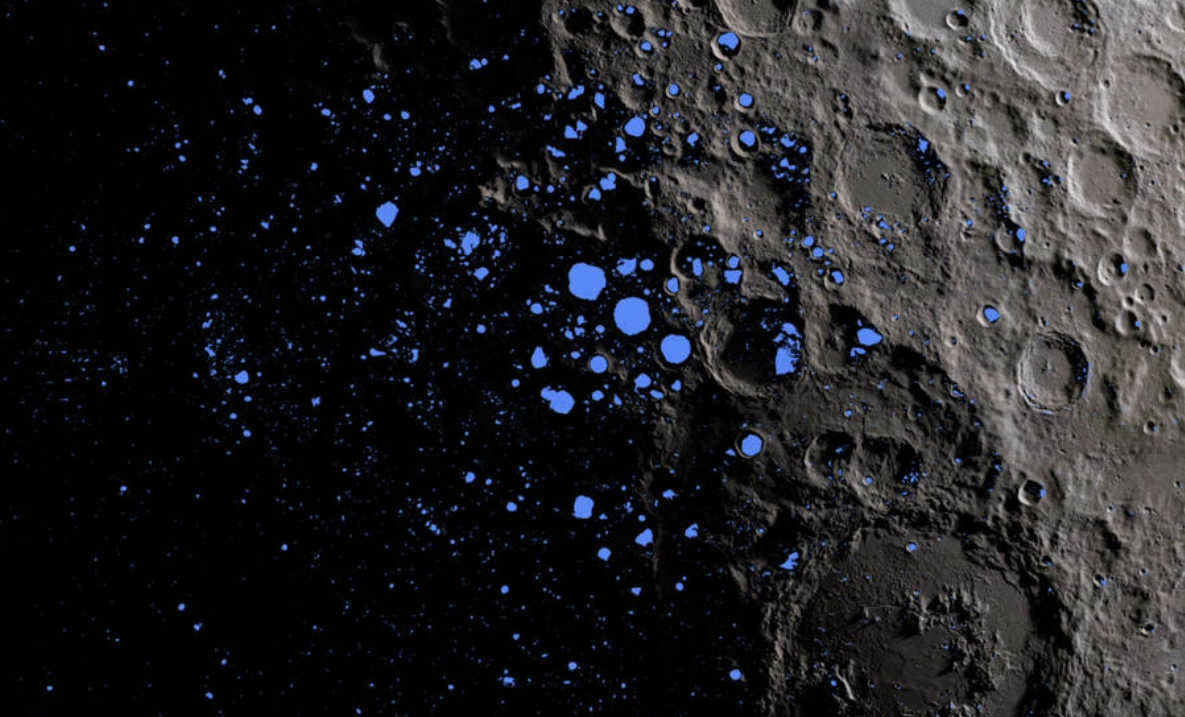
The term “Luna” is derived from the Slavic word for “light”. In the ancient Greek culture, it was referred to as Selene, while in ancient Egypt, it was known as Yah.
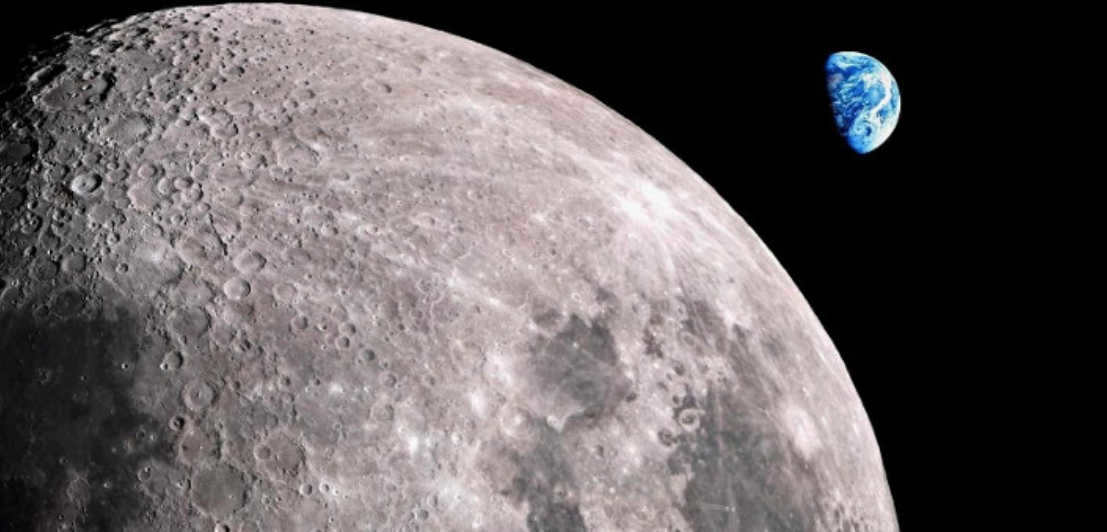
A theory known as the “Giant Collision” was proposed by scientists at a conference in Hawaii during the mid-1980s, suggesting that the Moon originated from a collision between the Earth and a celestial body called Teia approximately 4.5 million years ago.
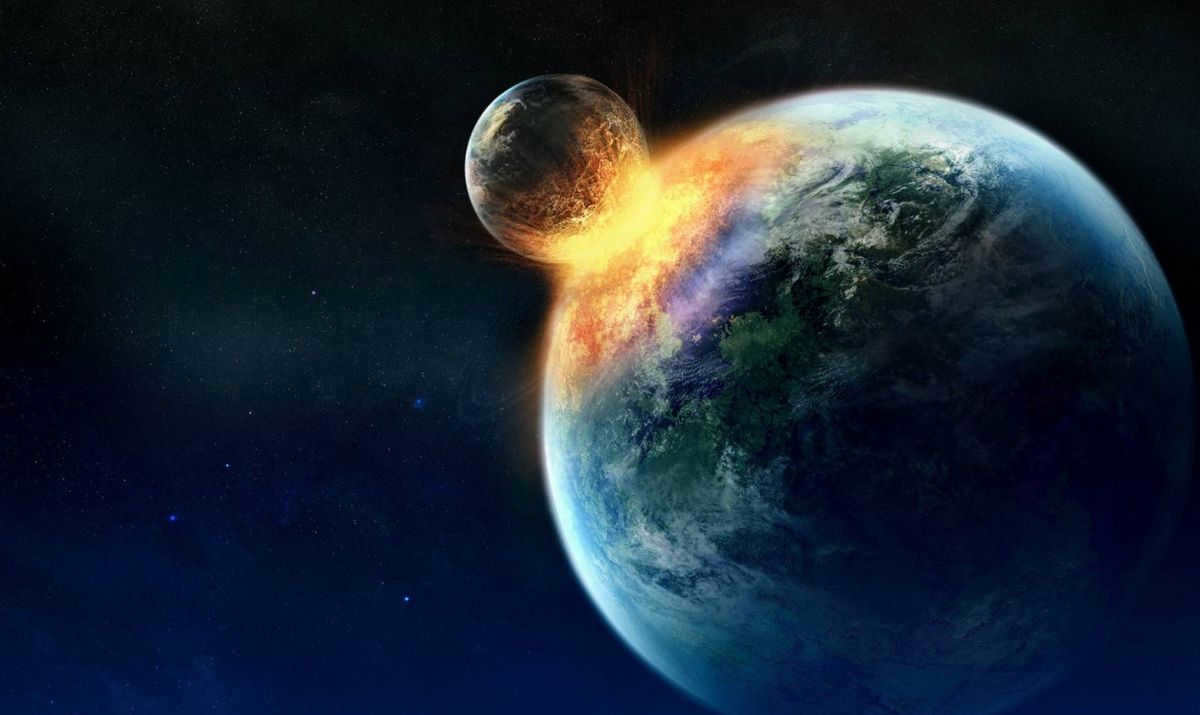
Orbit
The Moon has a point called Perigee that is the closest to Earth. Its distance from our planet ranges from 356.4 to 370.4 thousand kilometers.
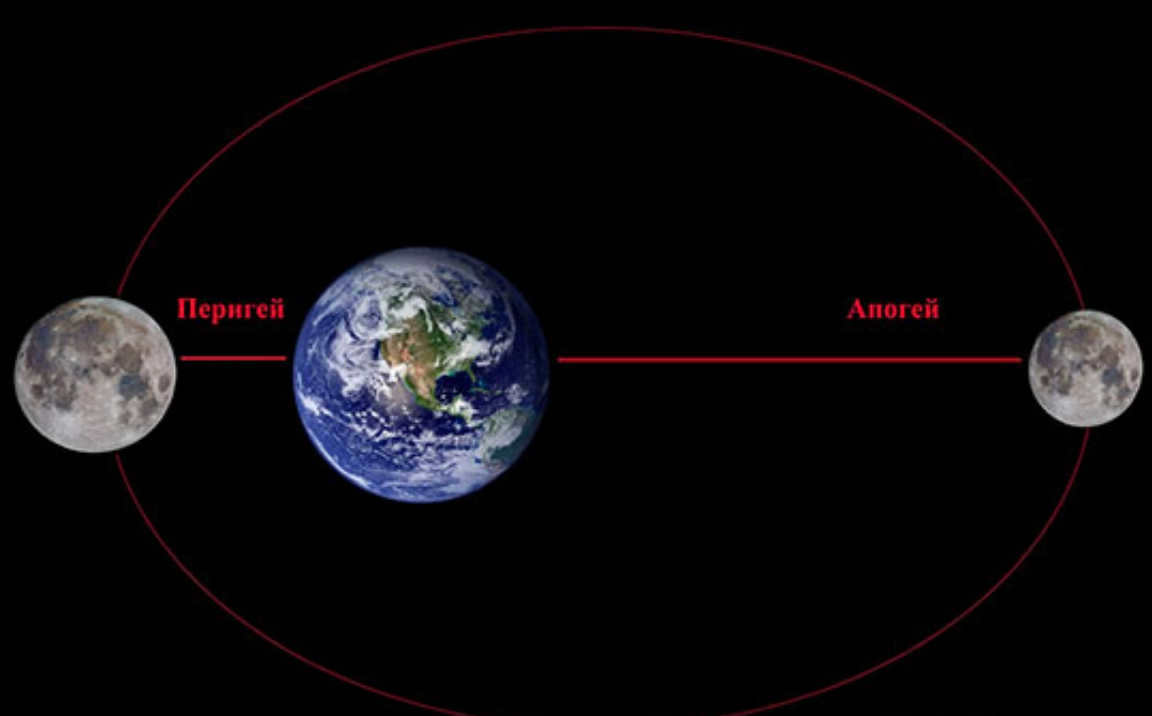
Apogee is the term used to describe the point in the Moon’s orbit that is farthest from Earth. The distance between Earth and the Moon’s apogee can range from 404 to 406.7 thousand kilometers. On average, the Moon moves at a speed of slightly over 1 kilometer per second as it orbits around Earth.
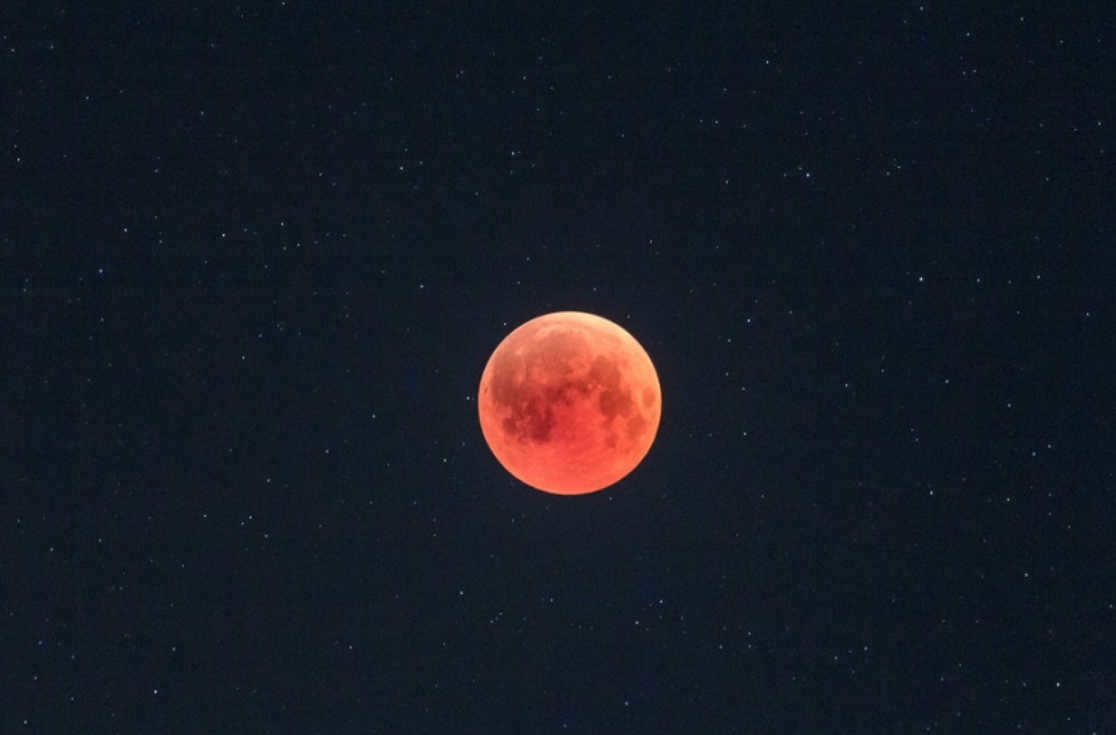
The Moon revolves around the Earth in an elliptical orbit.
It completes one orbit in 27.3 days. As tidal acceleration takes effect, the Moon gradually moves away from our planet. The annual increase in distance is approximately 2.8 centimeters. In conclusion, the Moon’s orbit can be described as a spiral that gradually unwinds at a slow pace.
Physical characteristics
The Moon is positioned as the fifth largest satellite in the solar system. Its surface experiences a temperature variation, with lows of -173°C at night and highs of +127°C during the day.
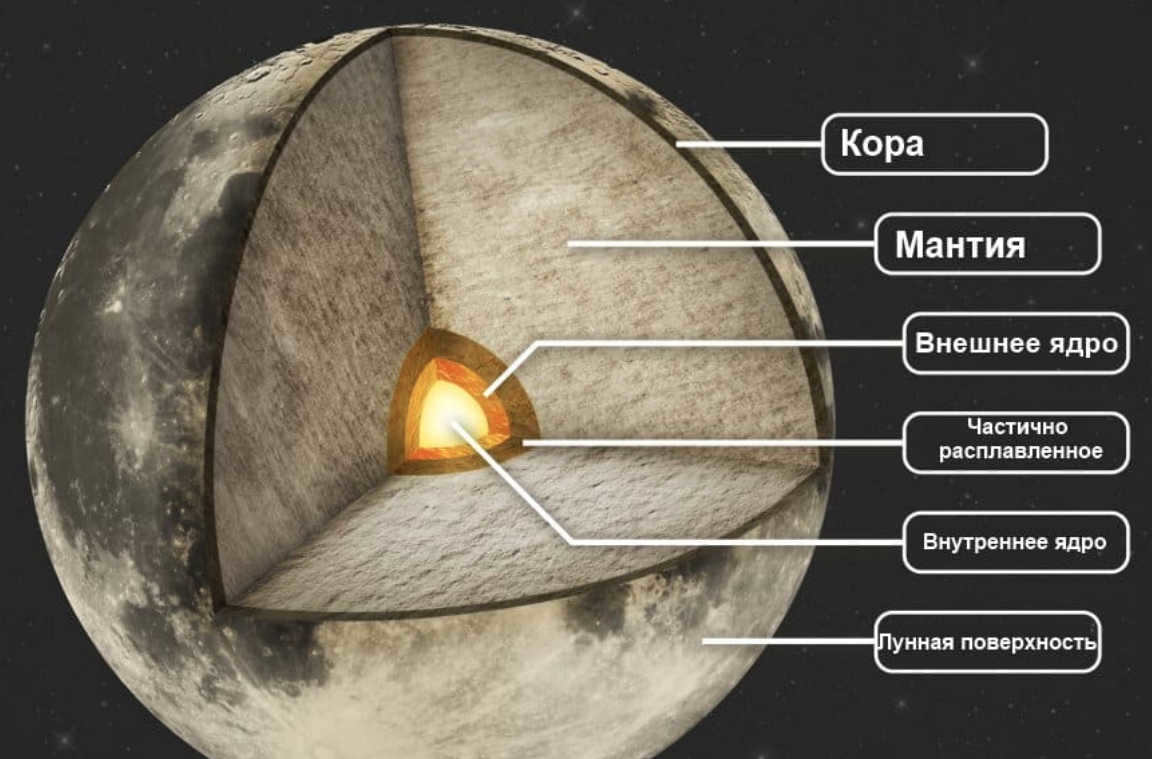
If you venture into the depths of the Moon, you’ll encounter a constant temperature of +35°C.
On average, the Moon has a radius of 1.737 kilometers, which is equivalent to one-fifth of the Earth’s radius. The total surface area of the Moon is approximately 3.793 x 10^7 km2.
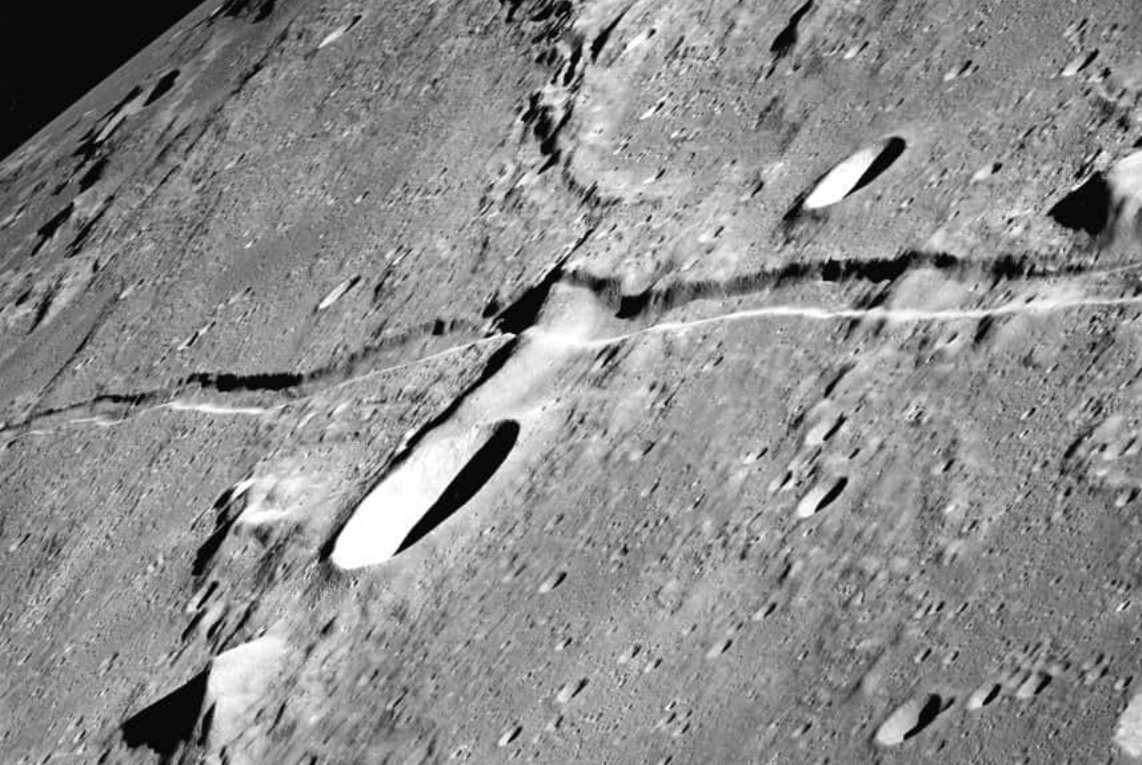
The Moon has a density of approximately 3.4 grams per cubic centimeter and experiences an acceleration of free fall equal to 1.62 meters per second squared. It weighs a staggering 7.3 x 10^22 kilograms.
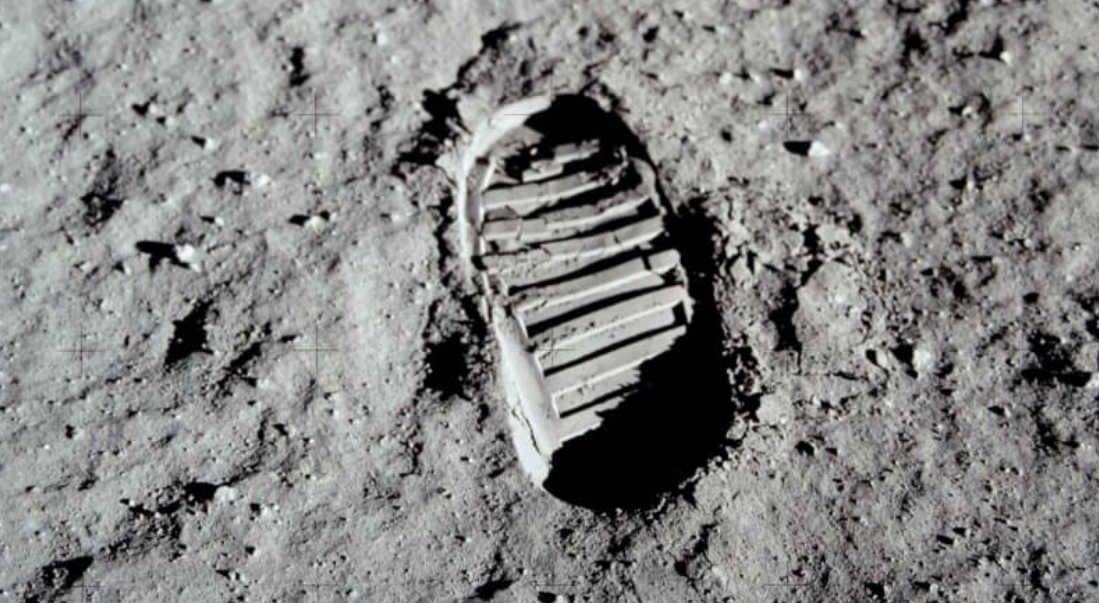
Comparison to Earth
Even though the Moon is located 400,000 kilometers away from Earth, these celestial bodies possess a strong bond that results in mutual influence.
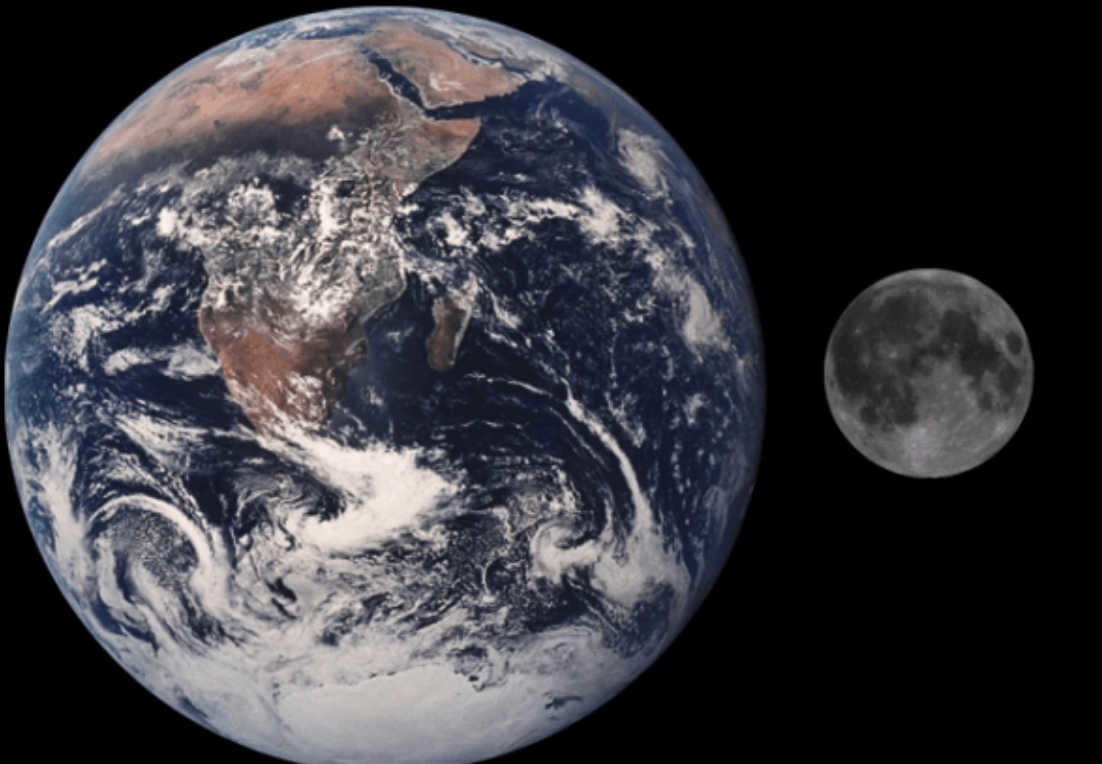
It is common knowledge that the moon has a significant impact on the Earth’s natural phenomena, such as the formation of tides in the sea. However, there are several distinguishing factors that set it apart from other celestial bodies, which will be explored in detail within this article.
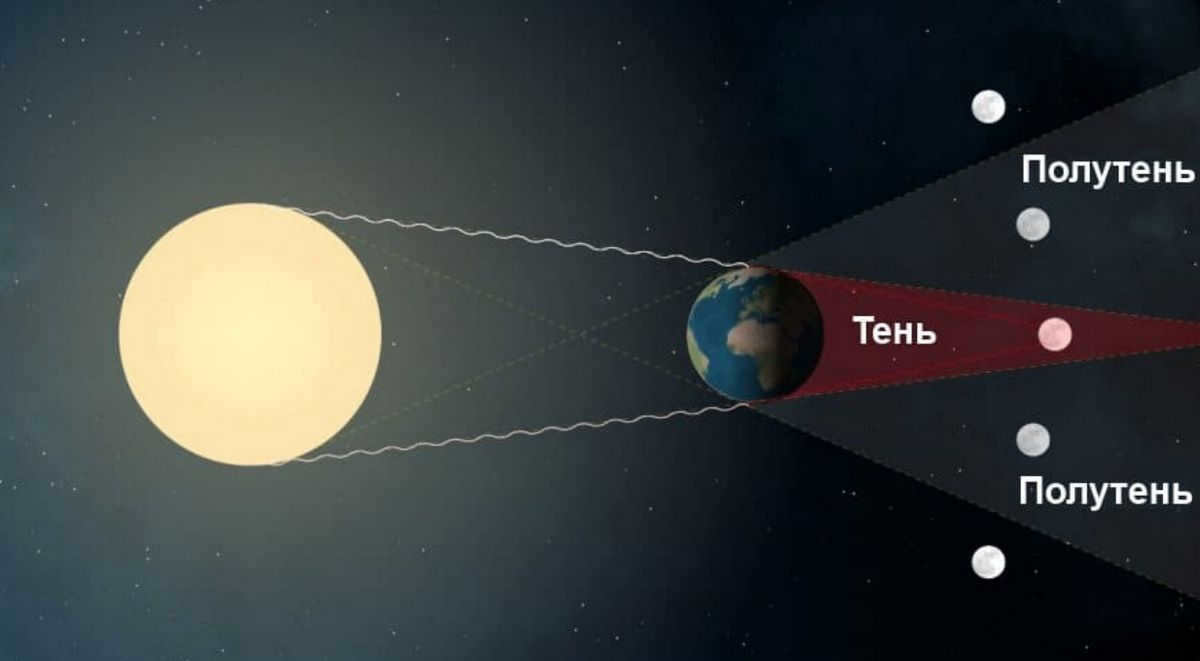
The Moon is approximately 80 times lighter than the Earth in terms of weight.
Nevertheless, the Earth’s radius is about 3.5 times larger than that of the Moon. Our planet has a geosphere surrounding it.
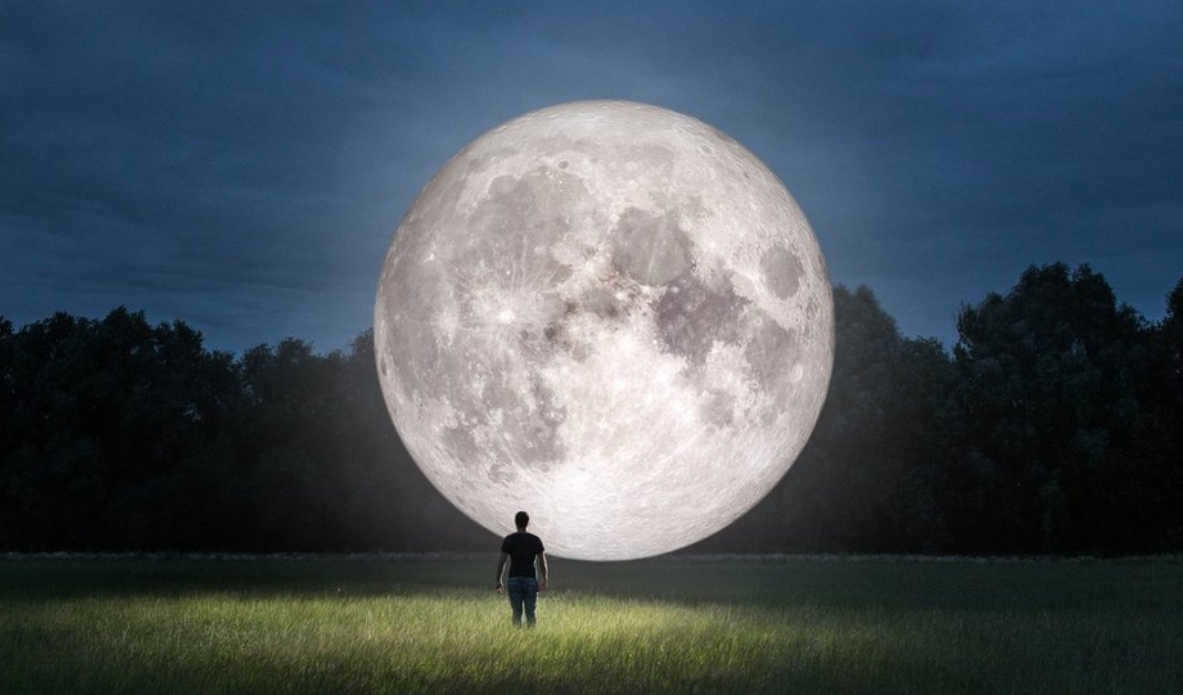
There is a gaseous shell surrounding this satellite, which contains various additional impurities. However, it should be noted that there is no atmosphere on this particular satellite. As a result, the presence of oxygen and wind is completely ruled out.

As previously stated, as a result of this phenomenon, the moon’s surface is warmed to a temperature of +120 ° C by the sun. During the night, it experiences a significant drop in temperature, cooling down to -160°C.
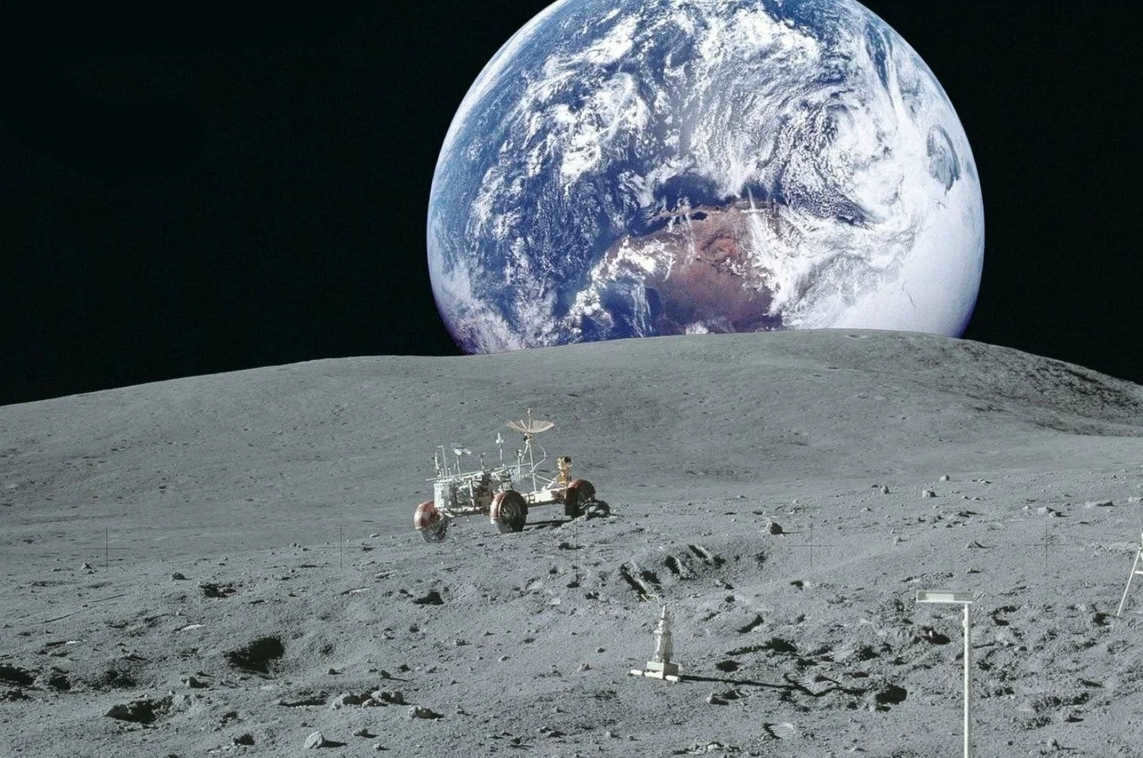
On our planet, there is light during the day and darkness at night. However, on the moon, the sky appears black and devoid of clouds during the daytime.
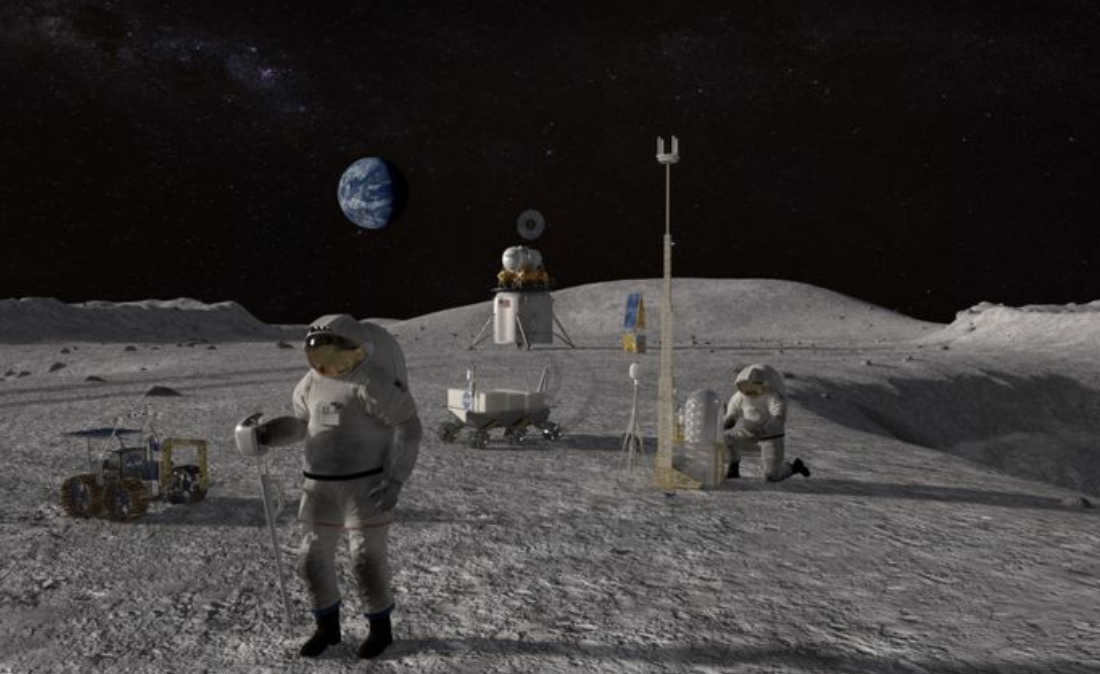
When the Sun is shining brightly, a multitude of stars can be observed in the sky. When viewed from Earth’s surface, the sky appears to be encompassed in a vibrant blue hue. This optical phenomenon is attributed to the presence of the Earth’s atmosphere.

The presence of sunlight during the day makes it difficult to observe the stars as the scattered rays obstruct the view. In comparison, the Earth’s surface reflects the Sun’s light much more intensely than the Moon, with a reflection strength that is fifty times greater.
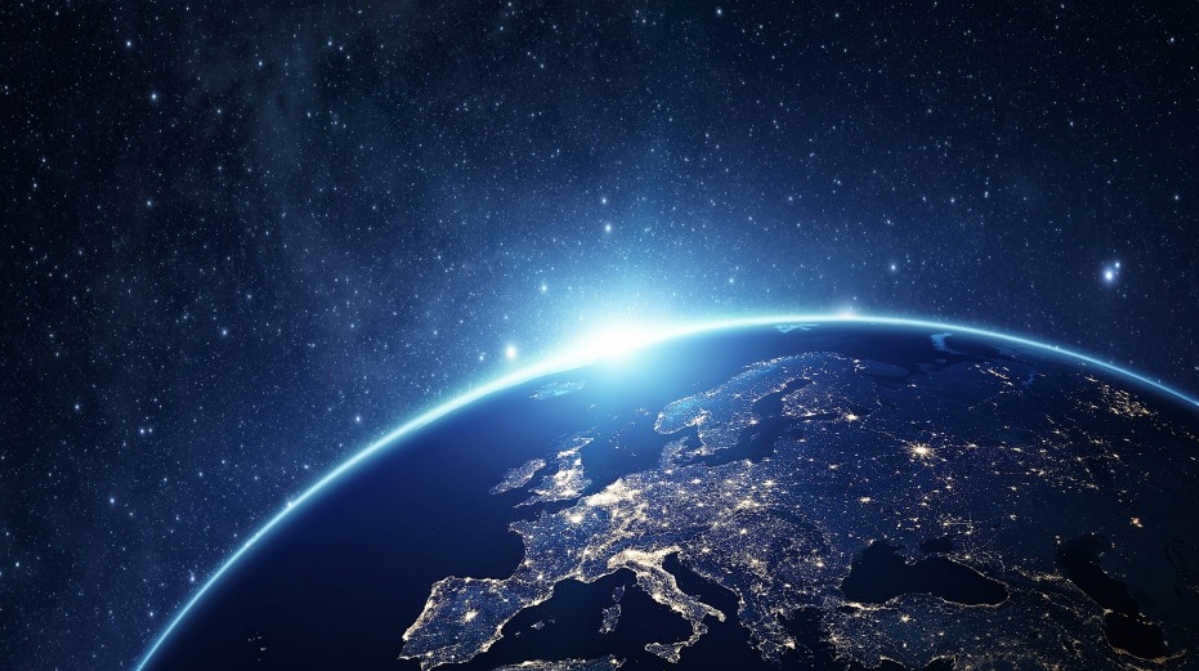
The Earth is mainly covered by oceans and seas, which make up about 70% of its surface area. The rest of the Earth’s surface is composed of islands and continents. On the other hand, the Moon is characterized by its mountainous landscapes and lunar seas.
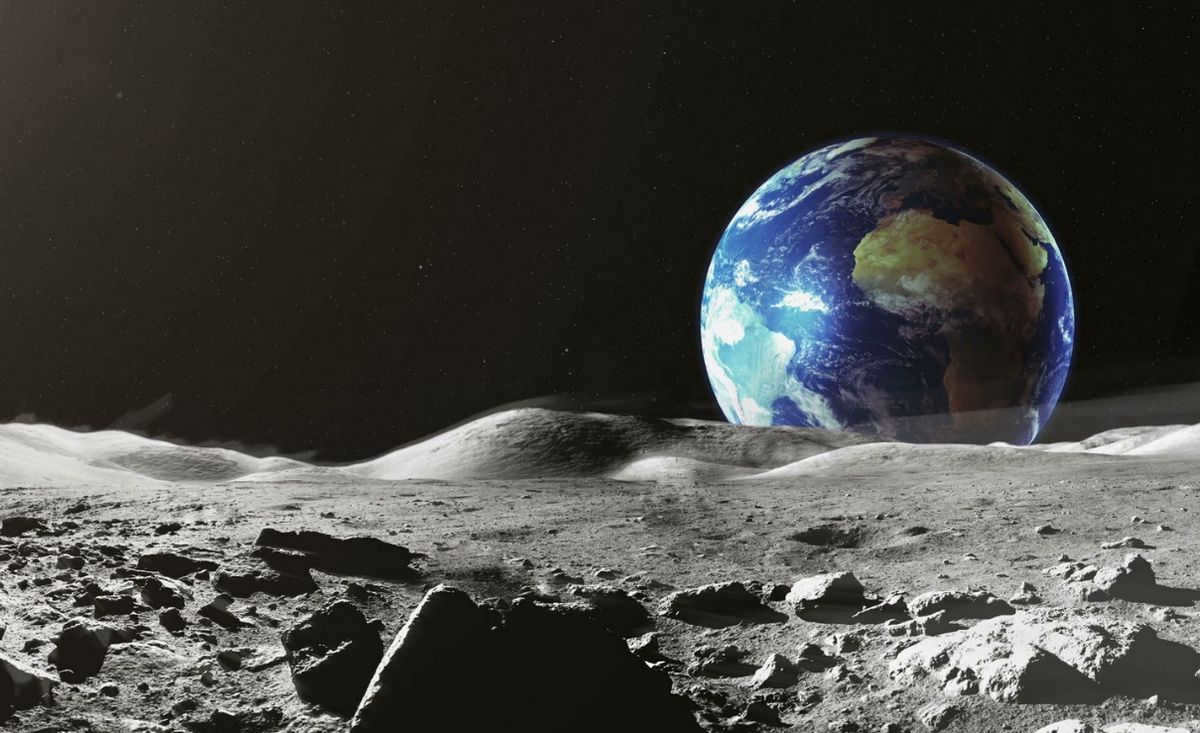
The mountains exist in the shape of enormous craters that contain solidified lava. It is believed by scientists that these mountains were created as a result of intense impacts with massive meteorites.
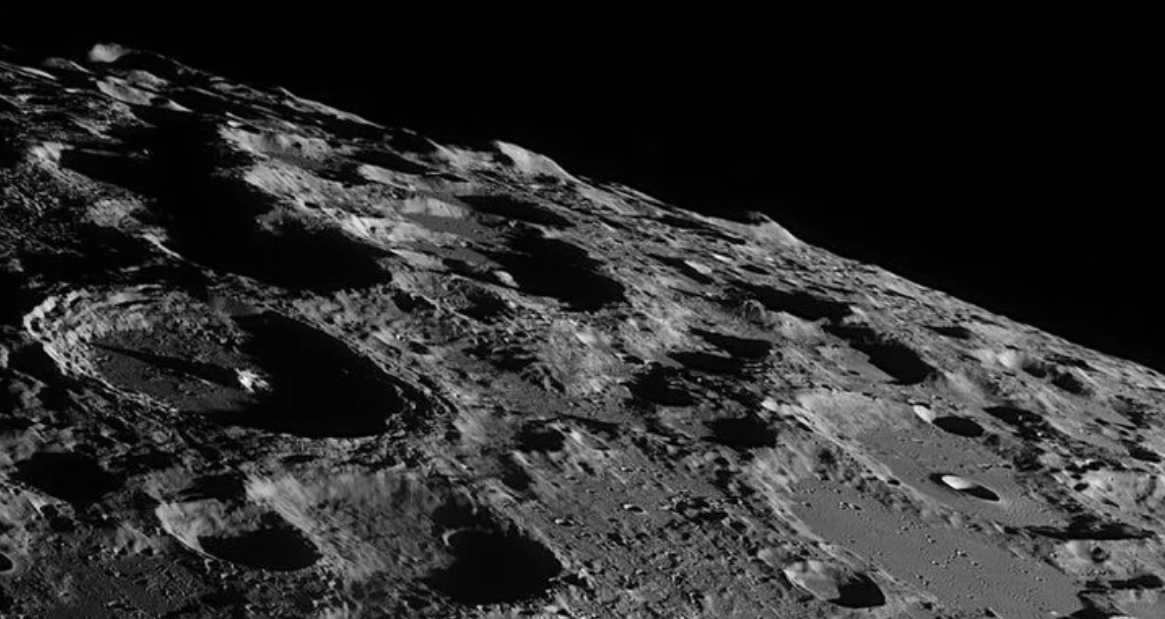
Nevertheless, the Earth’s mountains came into existence through the geological activities within the tectonic plates. The surface is covered with numerous fragments of rocks and fine dust, which can accumulate to a depth of 20-50 meters.
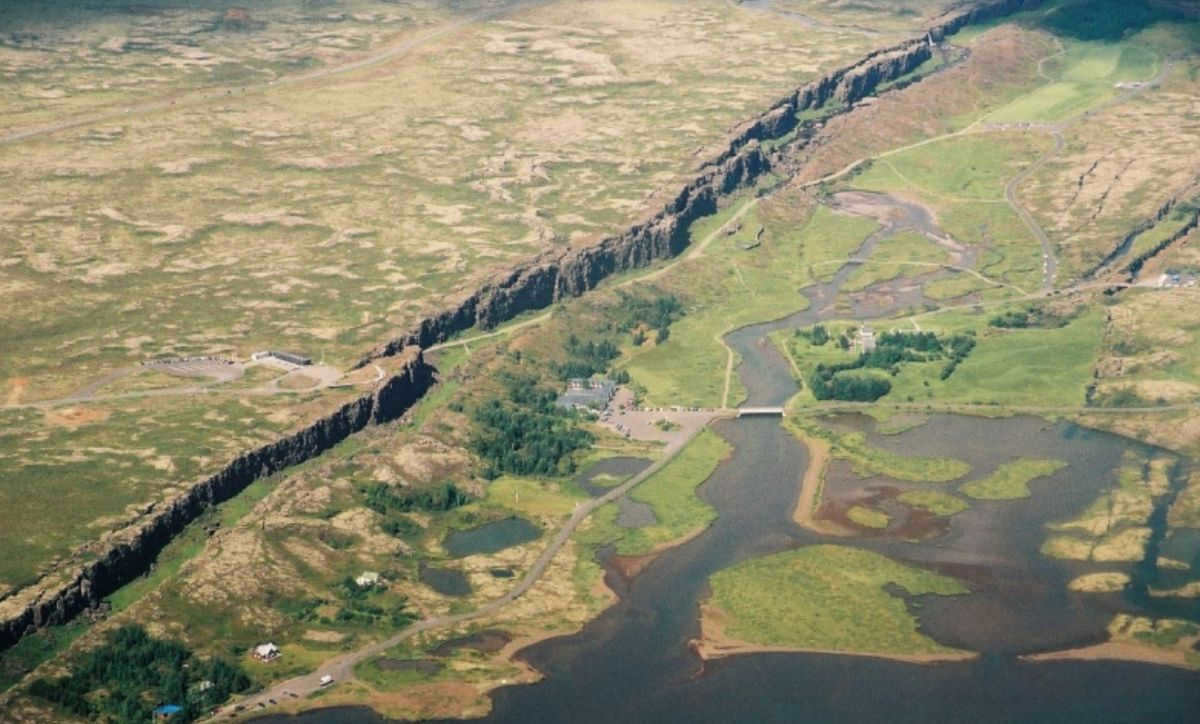
Unlike the Moon, the Earth is teeming with life and geological activity. While the Moon lacks active volcanoes and surface water, our planet is home to a vast array of both. Additionally, the Moon does possess a reserve of ice, albeit in limited quantities. Overall, the Earth’s abundance of water and volcanic activity sets it apart from its lunar counterpart.
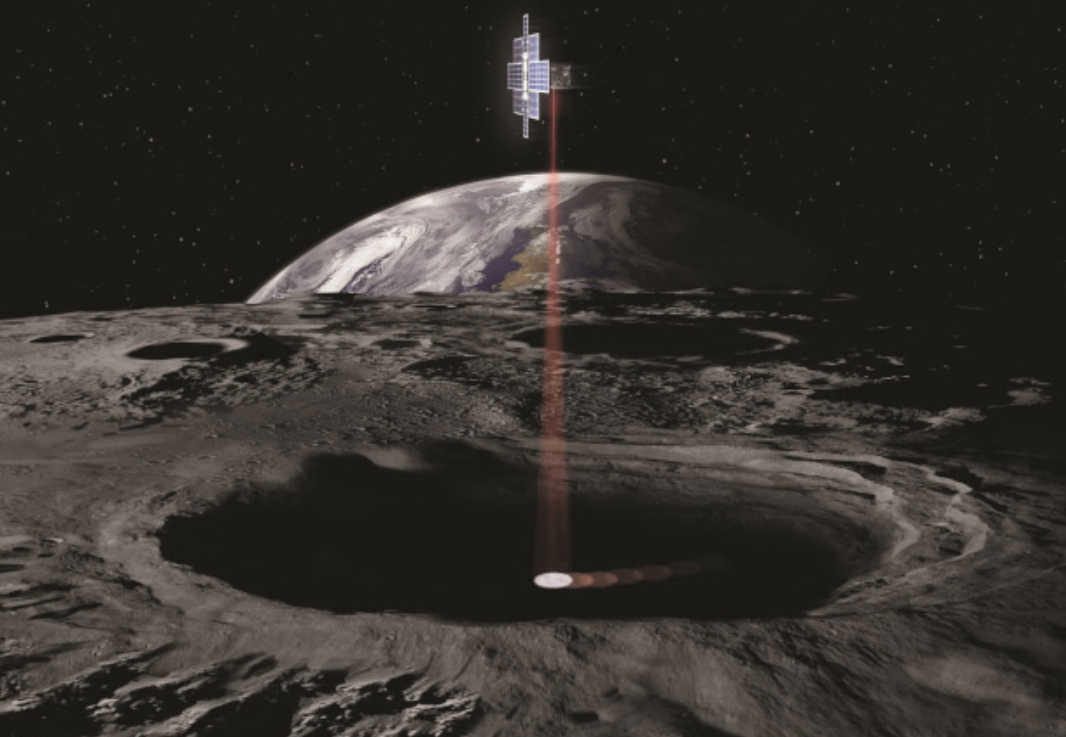
While wind and water have visible effects on the Earth’s surface, the lunar surface remains untouched by erosion or winds.
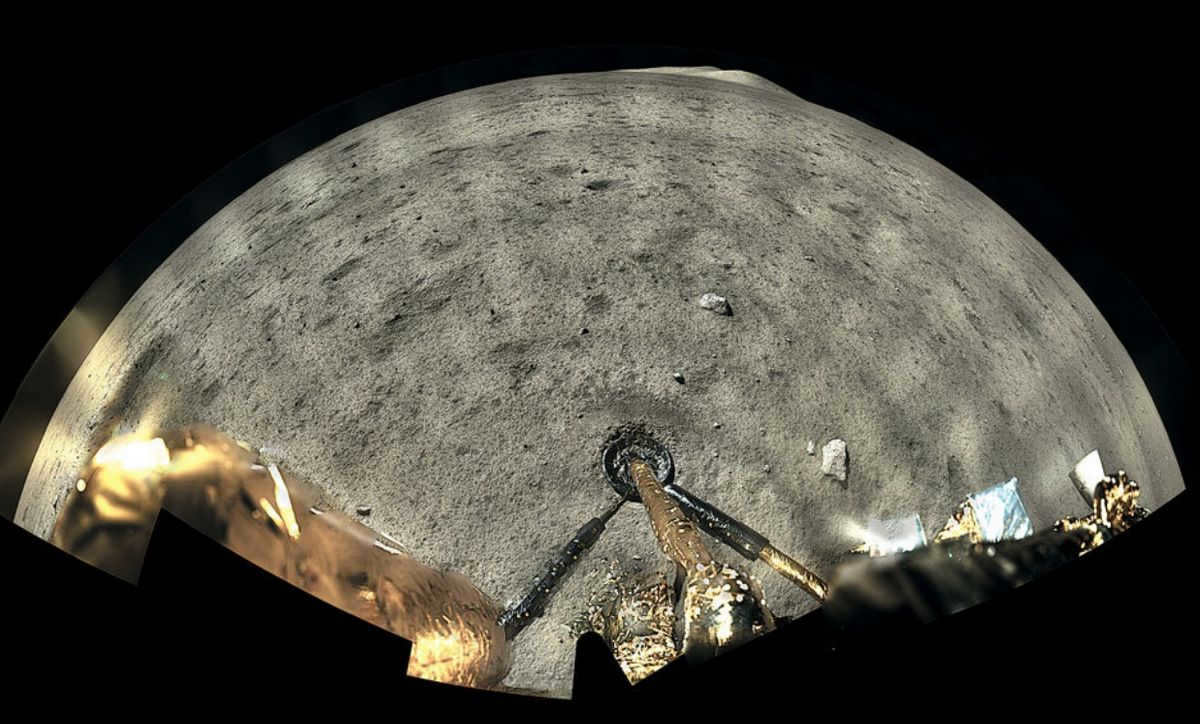
The Moon is characterized by a feeble magnetic field. Its gravitational force is six times less powerful compared to that of Earth. Moreover, the Moon and Earth exhibit dissimilar chemical compositions.
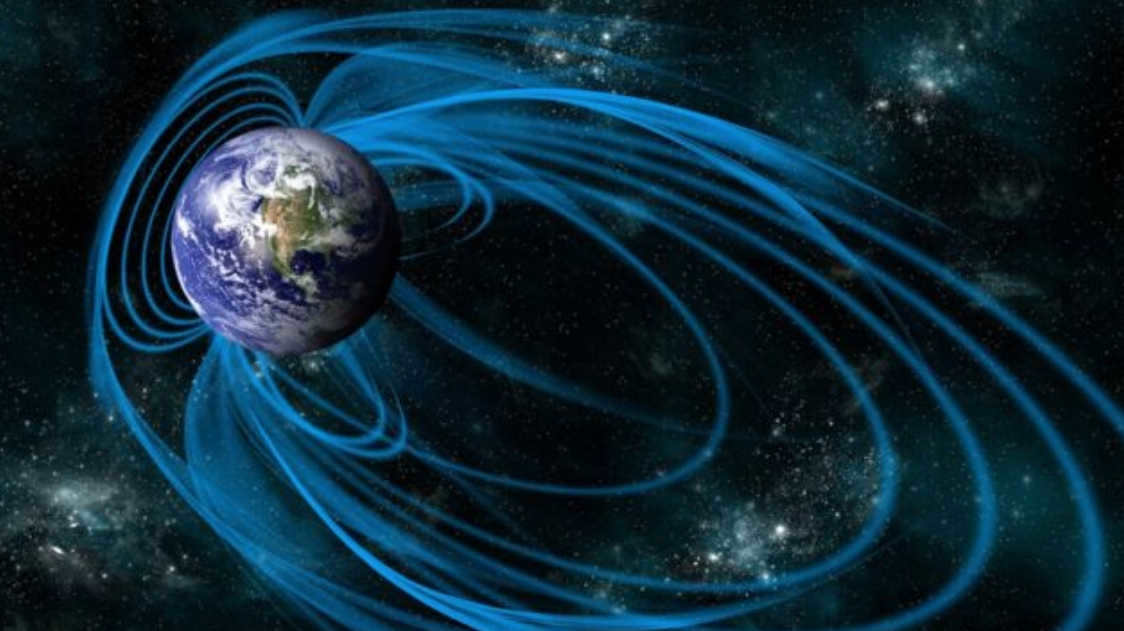
For instance, the Earth contains a significant amount of iron, a substance that is entirely absent on the Moon. To get acquainted with the photographs of the Moon and the Earth, and to make a comparison between these two celestial bodies, you can proceed.
Composition of the Lunar Atmosphere
The atmosphere on the Moon is characterized by its thinness. It contains various gases such as helium, neon, hydrogen, and argon. Interestingly, when the lunar surface is not exposed to sunlight, the concentration of these gases can reach an impressive 2*105 particles per 1 cm3.
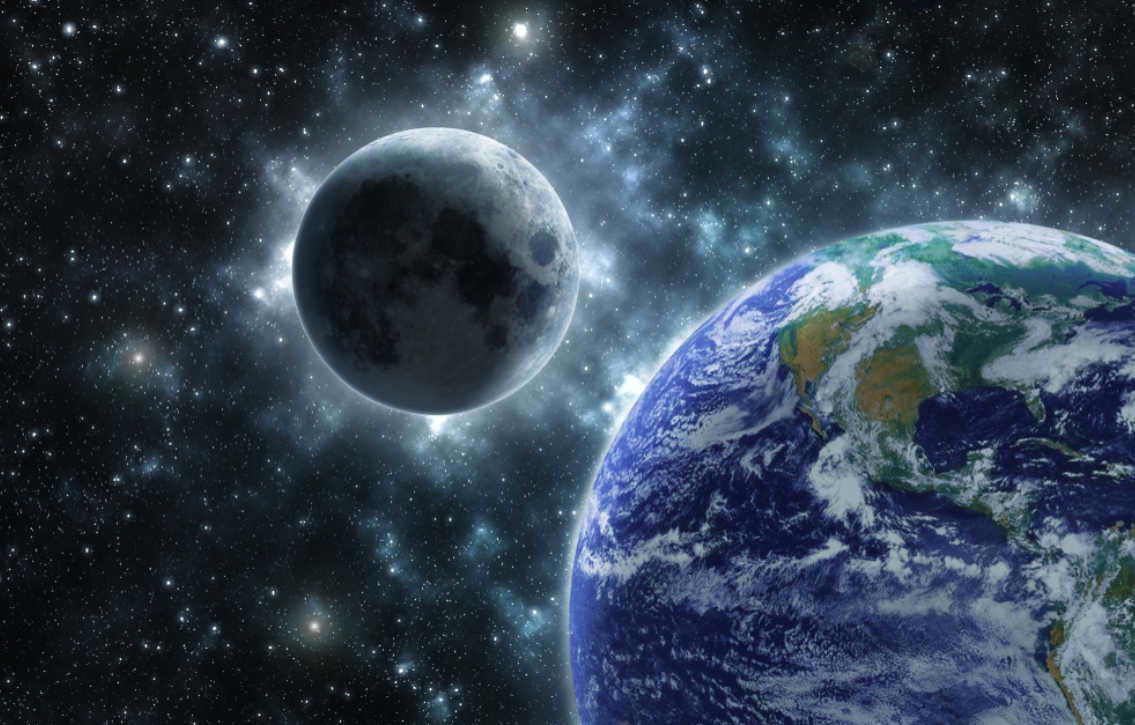
As the sunrise commences, the quantity of gases increases twofold due to the degassing of the surface.
Study of Science
Prior to the Common Era, Hipparchus initiated an exploration into the lunar movements amidst the celestial expanse. He successfully ascertained the inclination of the lunar orbit in relation to the ecliptic.
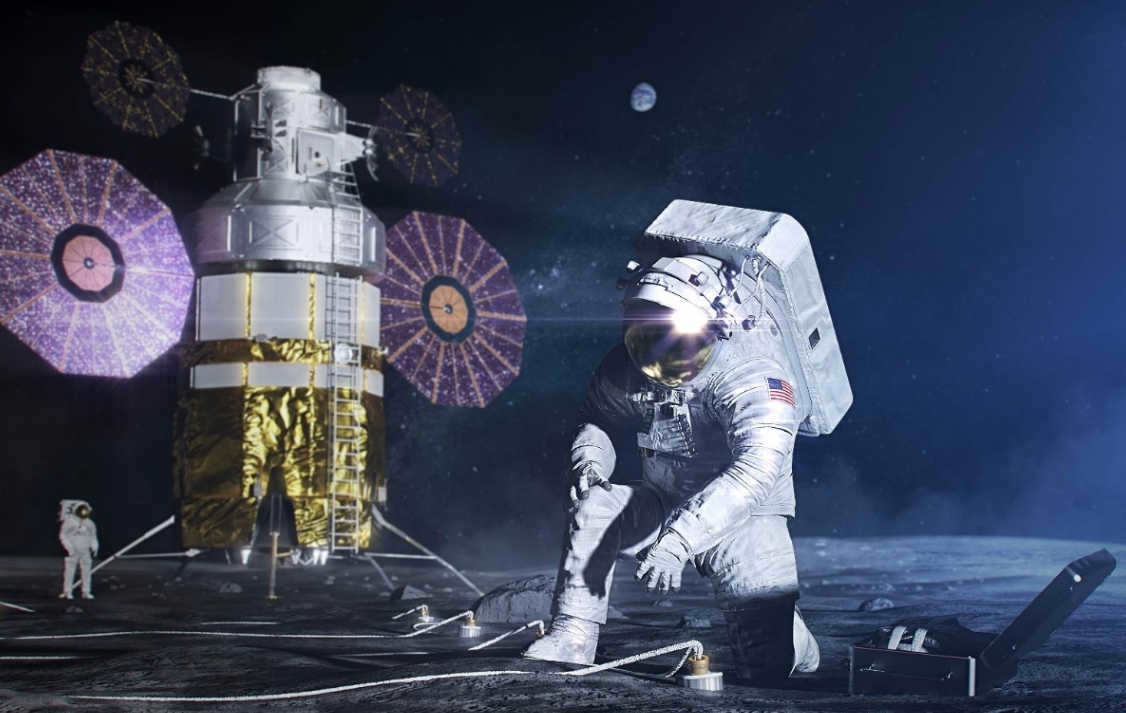
Furthermore, he calculated the measurements of our Earth and the celestial body. Moreover, Hipparchus established the primary characteristics linked to the motion.
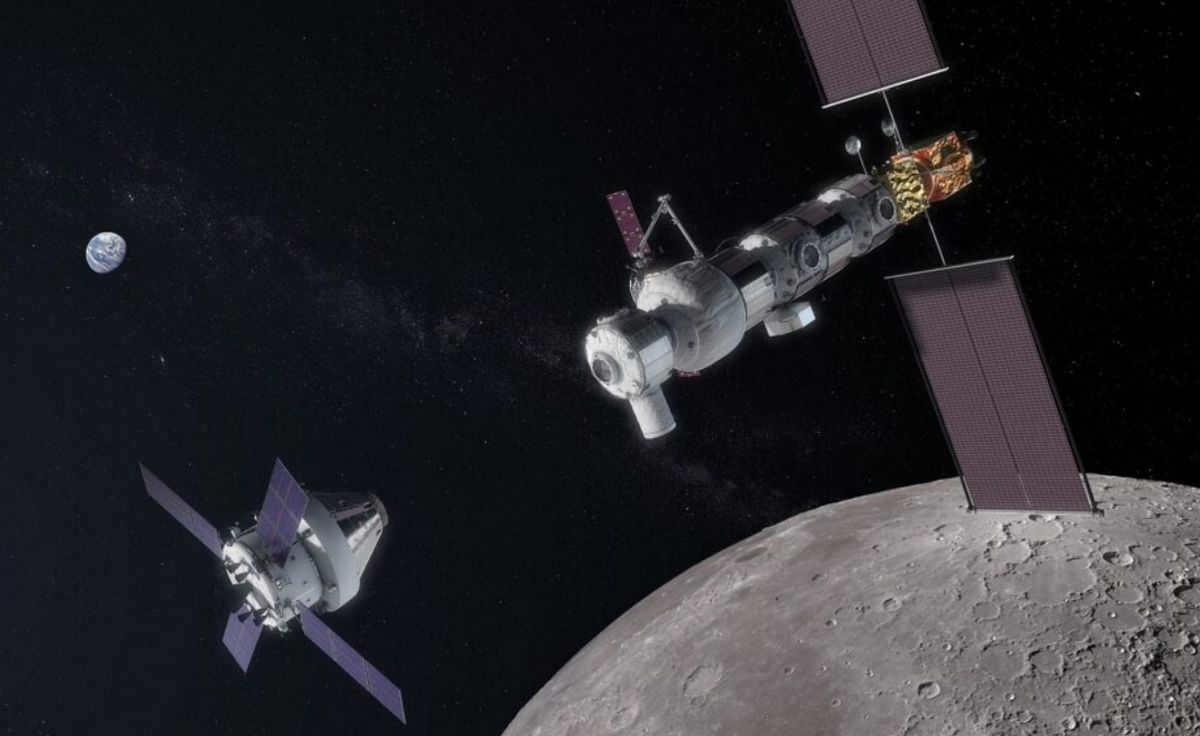
In the mid-17th century, G. Riccioli created the first-ever map of the Moon. During this groundbreaking endeavor, he also identified the existence of craters, which he aptly named “seas.”
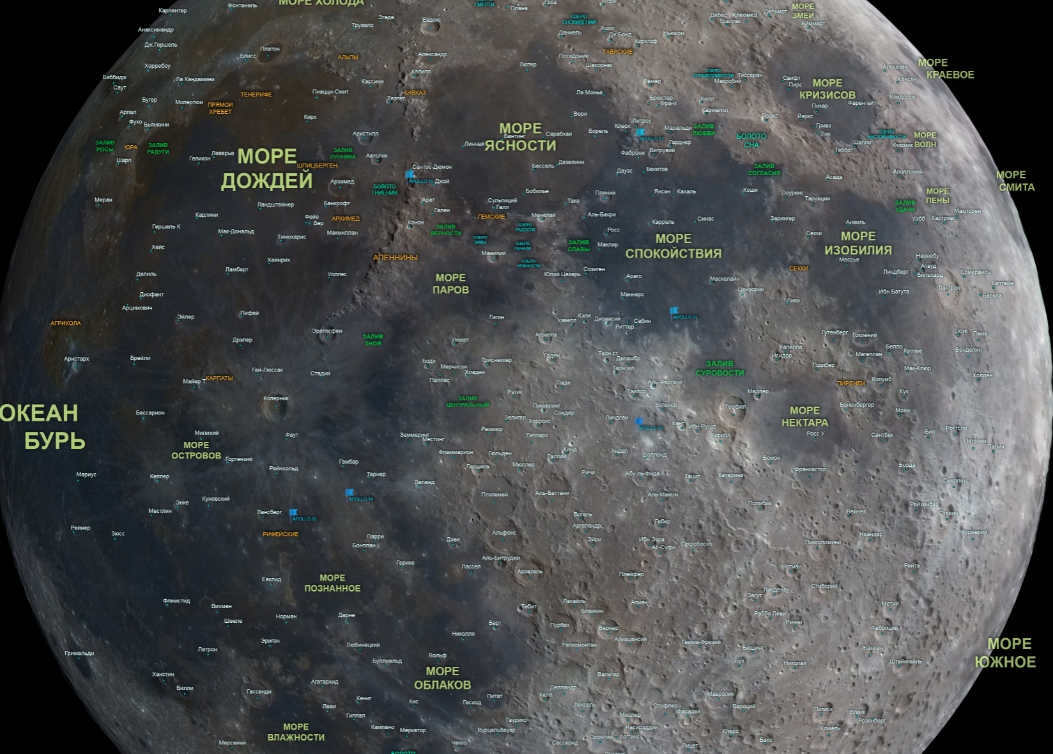
During the mid-1800s, a new phenomenon emerged in the field of astronomy – the capture of photographs as a byproduct of astronomical observations.
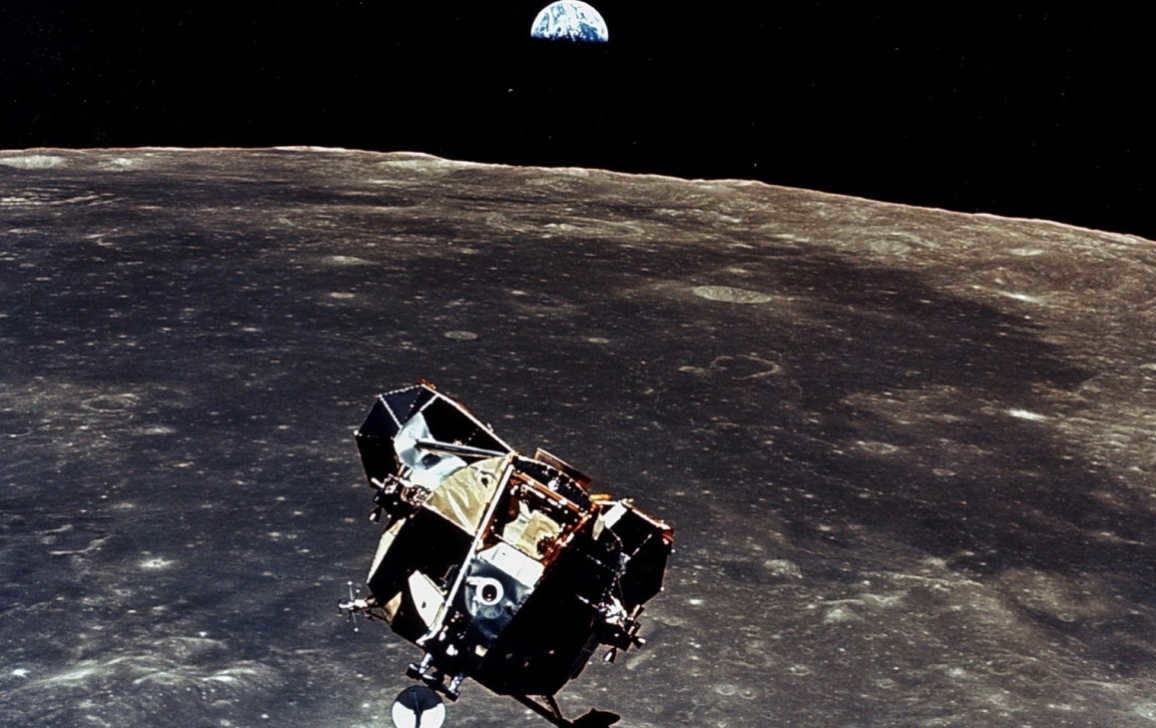
Luna-2 became the first spacecraft to successfully land on the Moon in September 1959.
In that same year, scientists achieved the remarkable feat of observing the far side of our satellite when the Soviet Union’s Luna-3 spacecraft flew above it. Luna-3 also captured images of the far side of the Moon, which were later shared with the public.
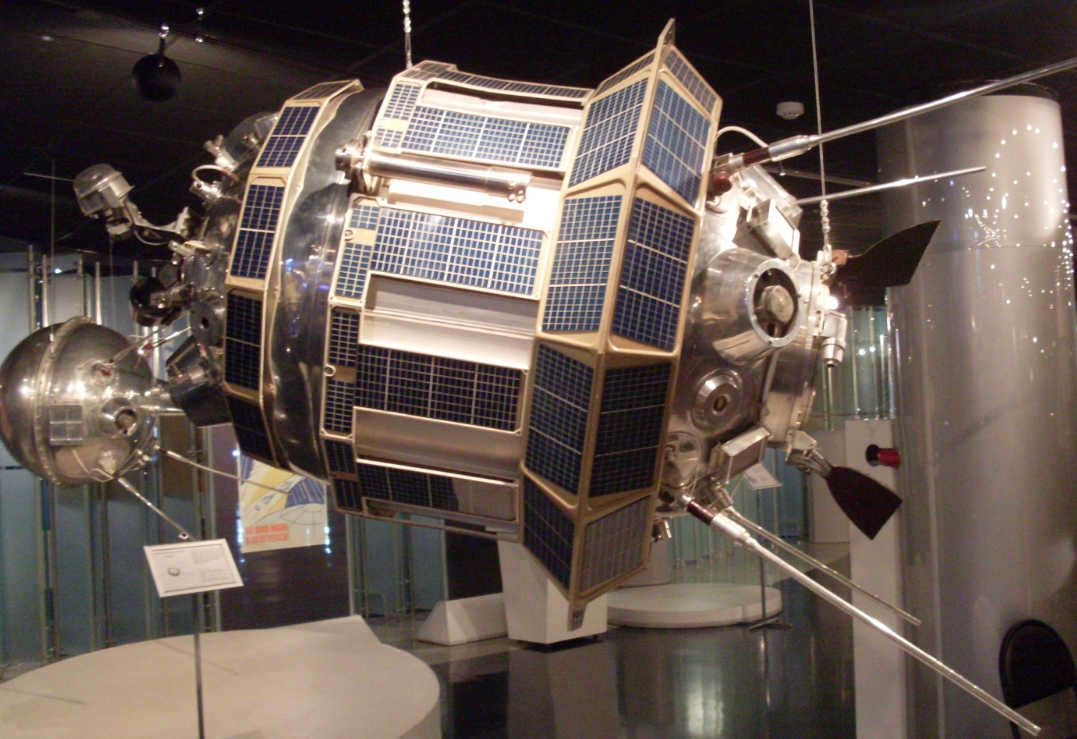
Following the decision of American scientists to embark on a manned space mission, they launched the historic “Apollo” expedition, which successfully touched down on the surface of a celestial body in July 1969.
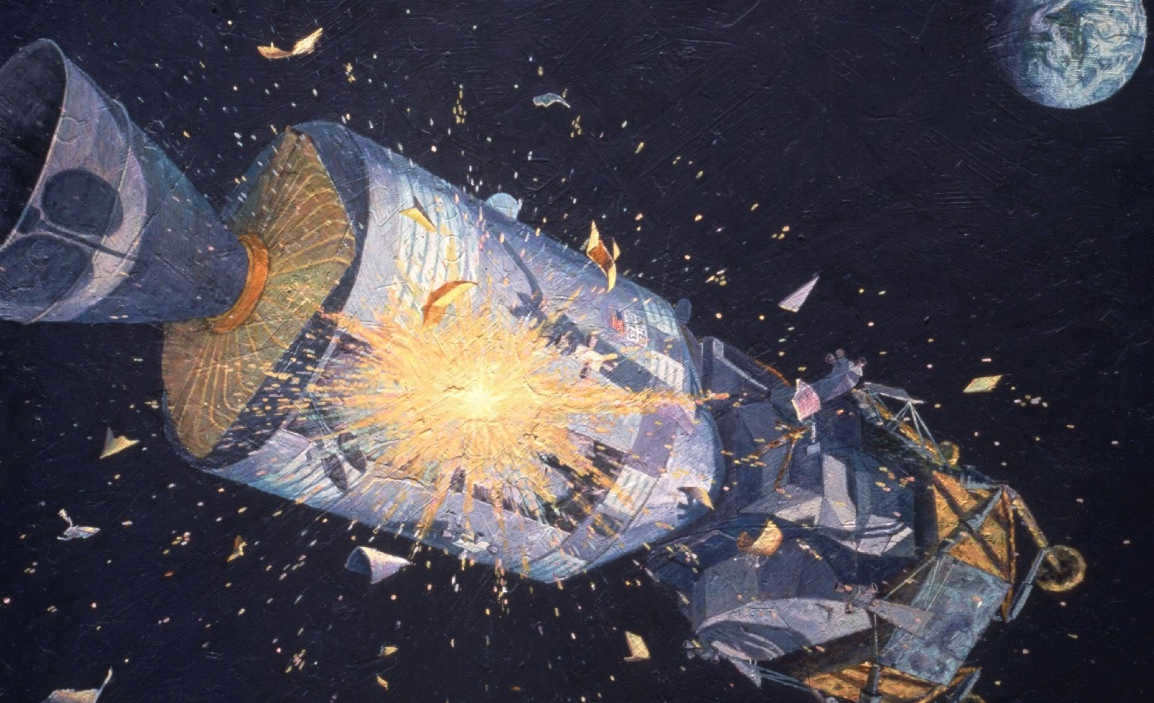
Three years later, the most recent landing occurred. Neil Armstrong, a United States of America astronaut, became the first person to set foot on the Moon. Following him was E. Aldrin, who had the opportunity to experience this incredible feat as well.
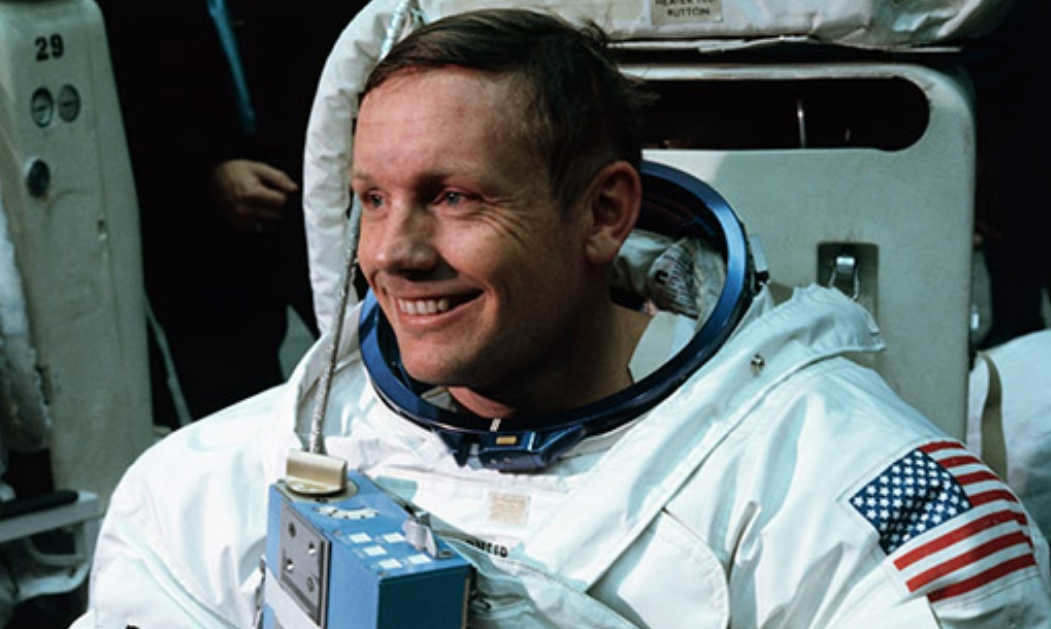
M. Collins, on the other hand, chose to stay inside the orbital module during the expedition.
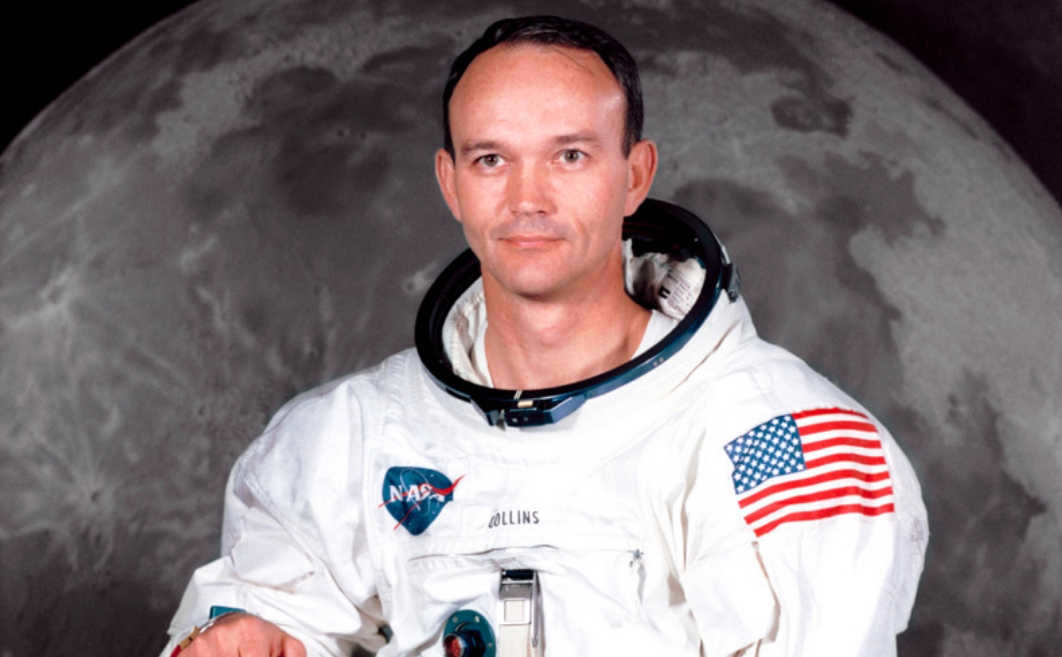
In the late summer of 1976, the Soviet Union’s spacecraft “Luna-24” successfully returned to Earth with valuable lunar soil samples.
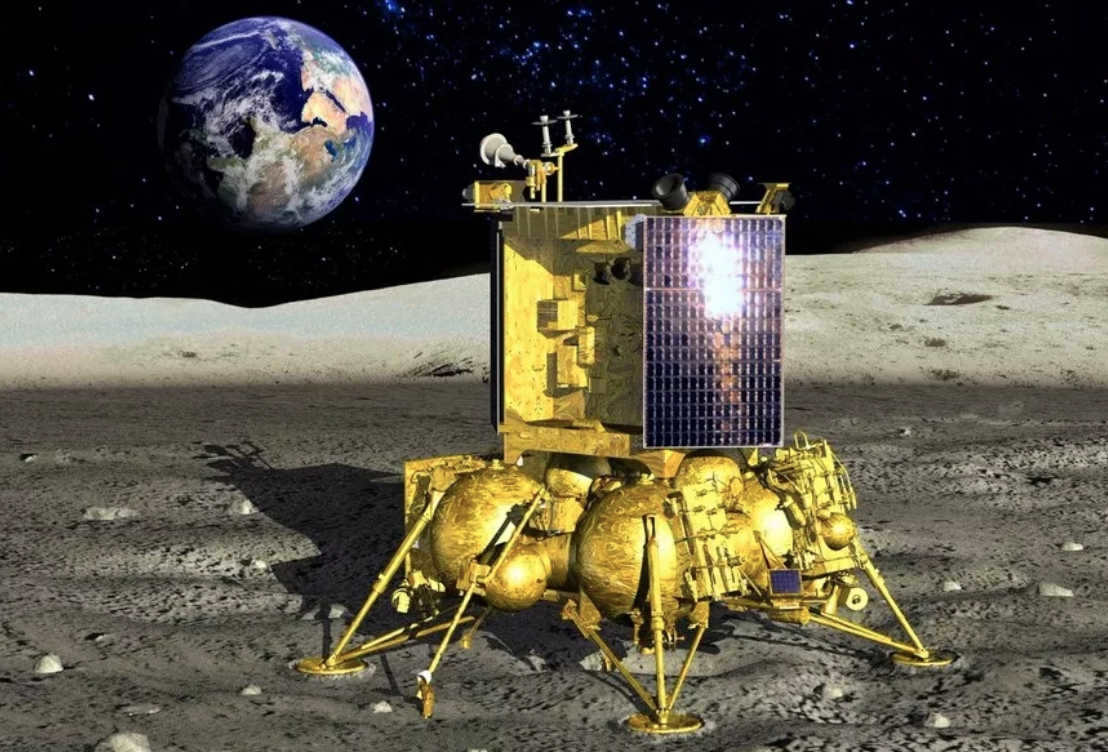
In 1990, the Hiten from Japan became the next vehicle to journey to the Moon. Presently, numerous lunar rovers and probes are present in orbit and on the lunar surface. These vehicles have been released by various countries.
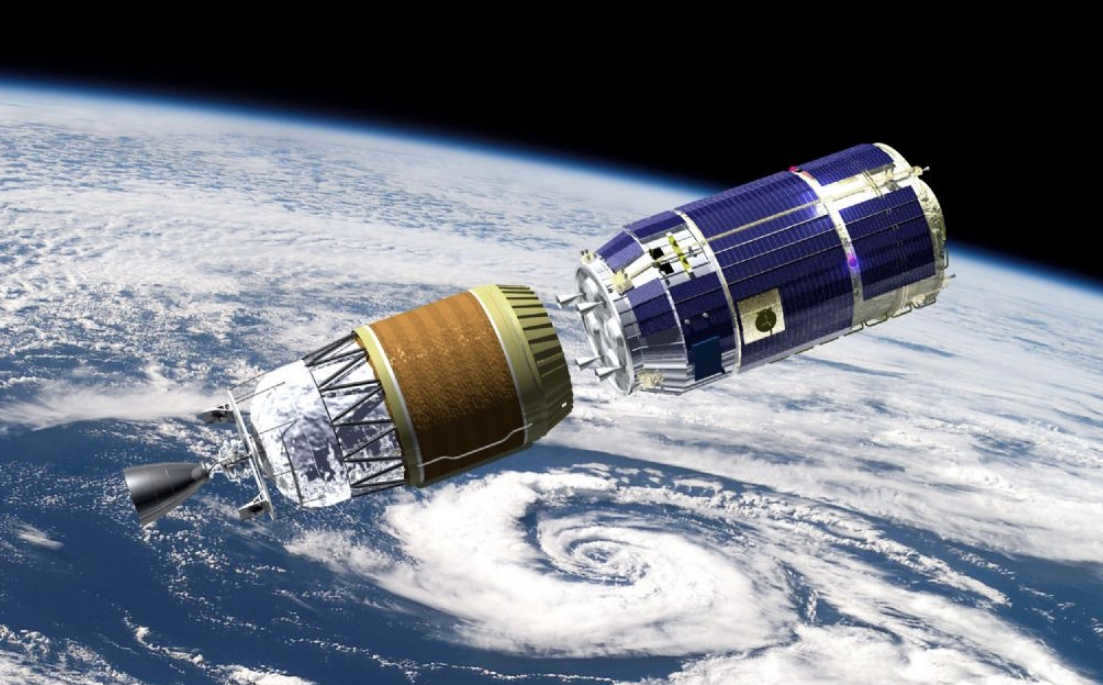
Fascinating Facts
Currently, the Moon stands alone as the sole celestial body beyond Earth that has been graced by human footsteps. Other satellites and planets, on the other hand, remain the subject of exploration solely through the use of spacecraft.
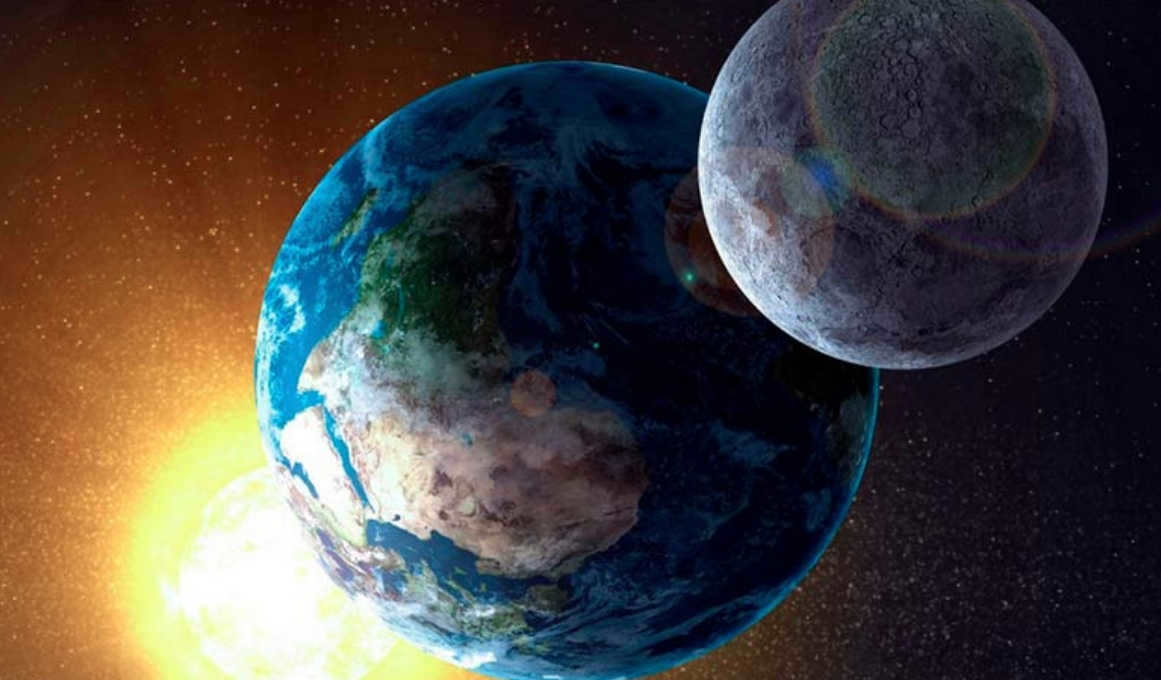
The Moon Agreement, which was signed in 1979, specifies that the utilization of a celestial body is allowed for peaceful purposes.
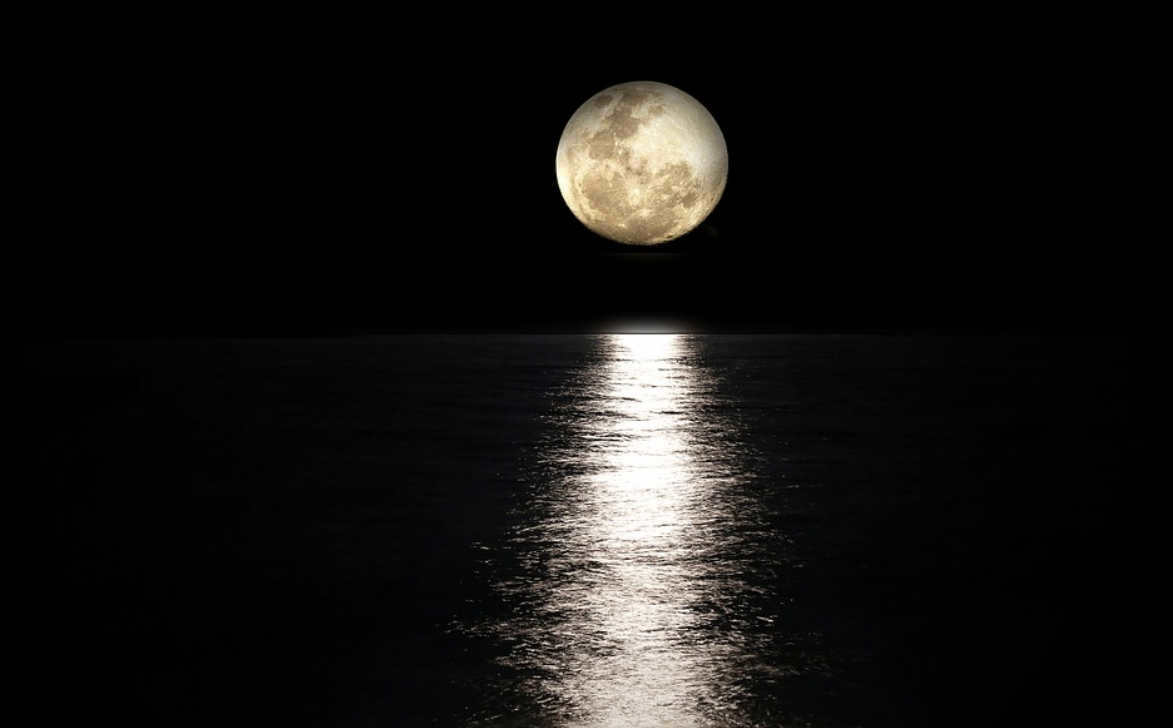
Accordingly, every nation has an equal entitlement to the Moon and other celestial objects. Thus, nations are prohibited from asserting territorial claims on other nations and asserting their dominion over any celestial entities.
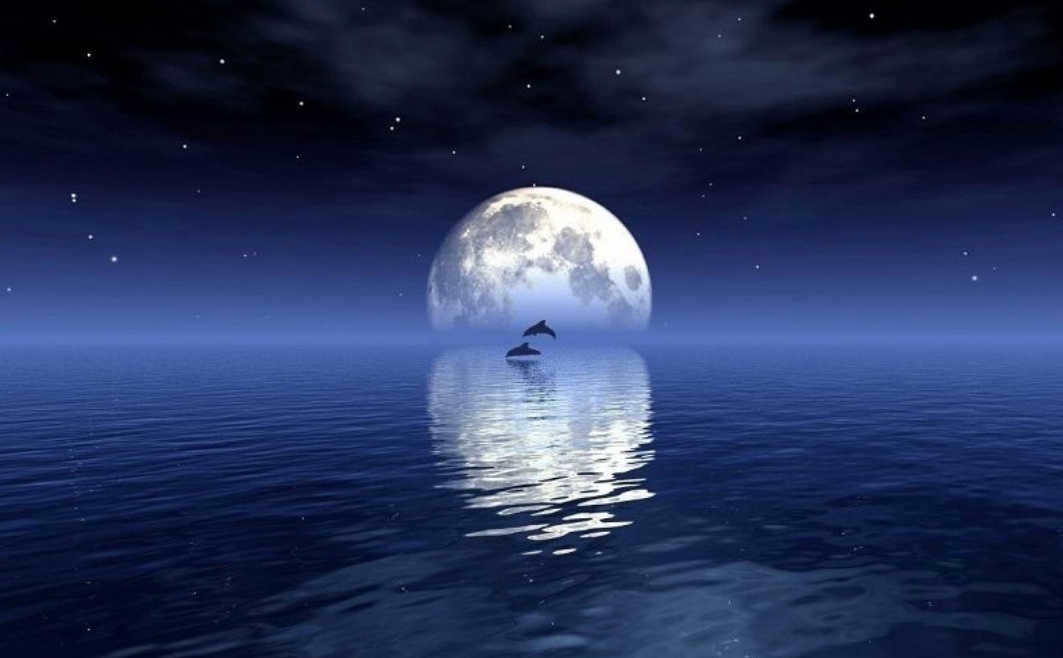
The Earth’s disk remains almost stationary in the sky of the moon.
Our planet is highly affected by the moon’s gravitational pull. As previously stated, this is the main cause of the tides.
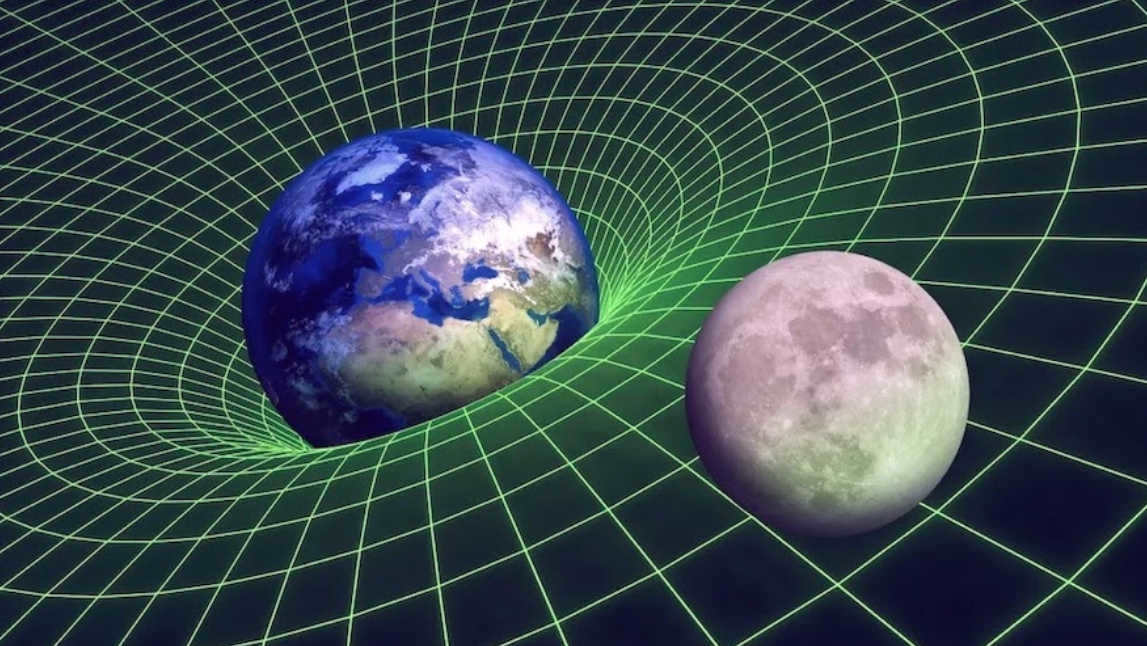
The Bay of Fundy in Canada is known for having the highest tidal range in the world, with a recorded amplitude of 18 meters.

Although the Moon rotates on its axis, it consistently presents the same face to Earth, indicating a synchronized motion.
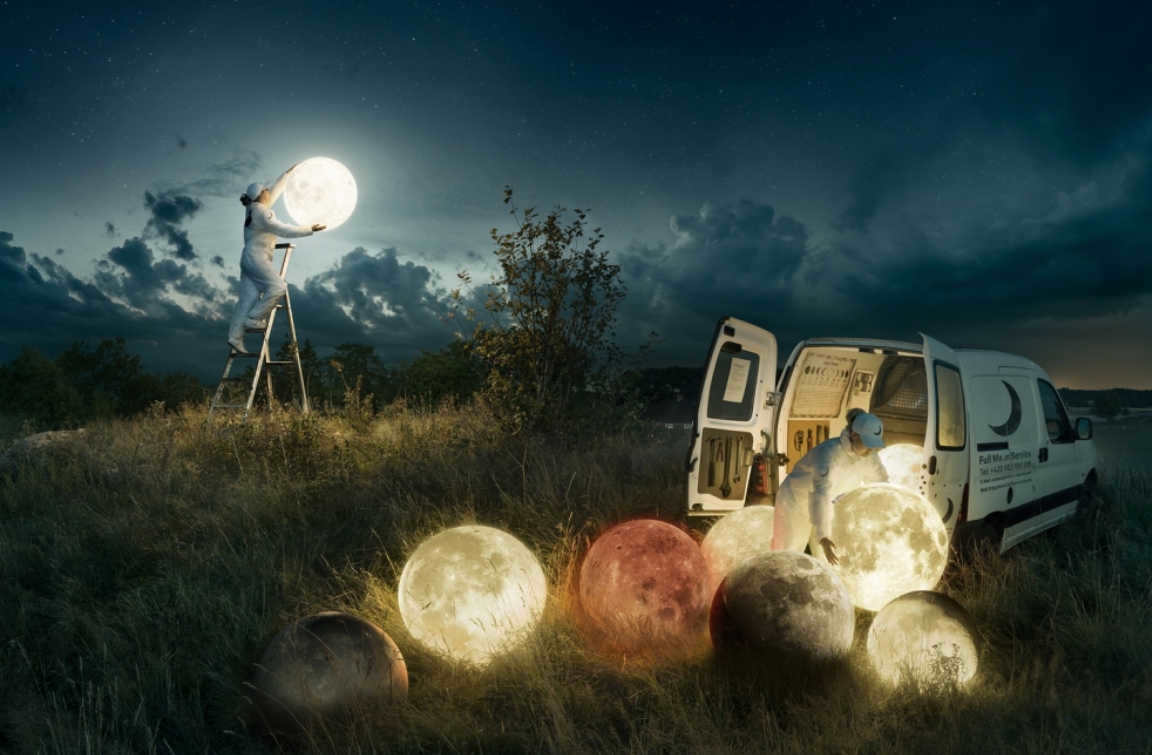
During the 17th century, G. Galileo made a groundbreaking discovery known as “libration”. This phenomenon allows humans to observe approximately 59% of the Moon’s surface from our planet. It is worth noting that the Moon does not possess a magnetic field.

Nevertheless, there exist certain rocks that become magnetized and create compact shields, which are found in specific areas.
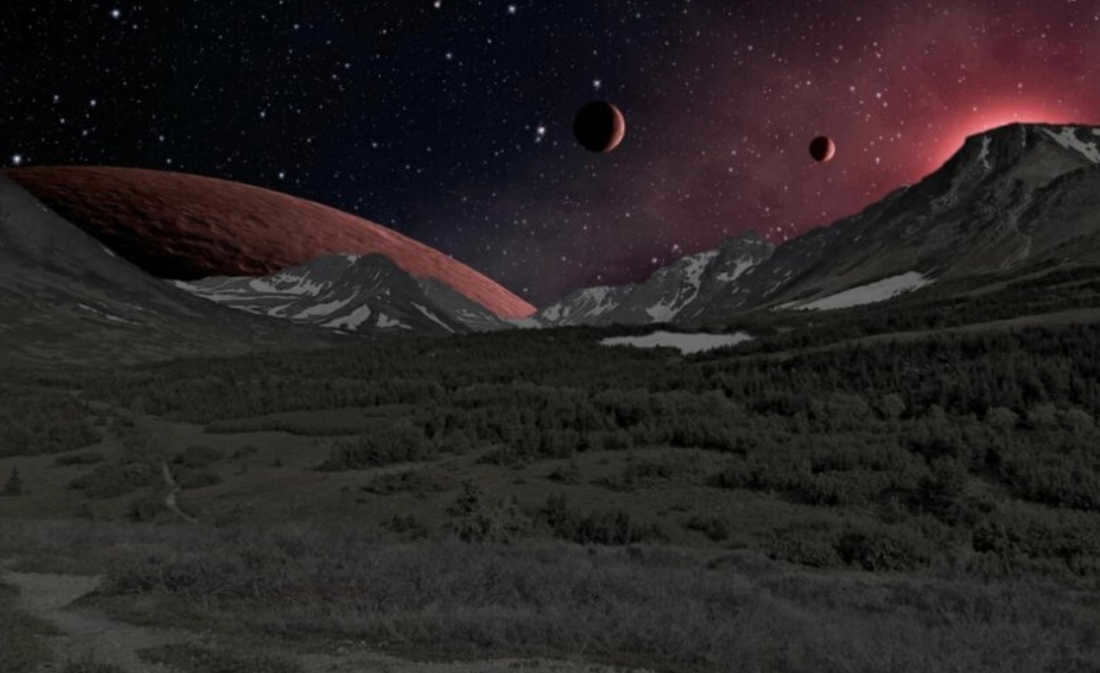
An extraordinary occurrence in the field of astronomy is referred to as a “super moon”. It occurs when the Moon’s closest approach to Earth, known as perigee, coincides with the full moon phase.
Newest Updates
In the 1970s, a team of scientists launched a mission named Apollo 17 with the objective of reaching the Moon’s surface.
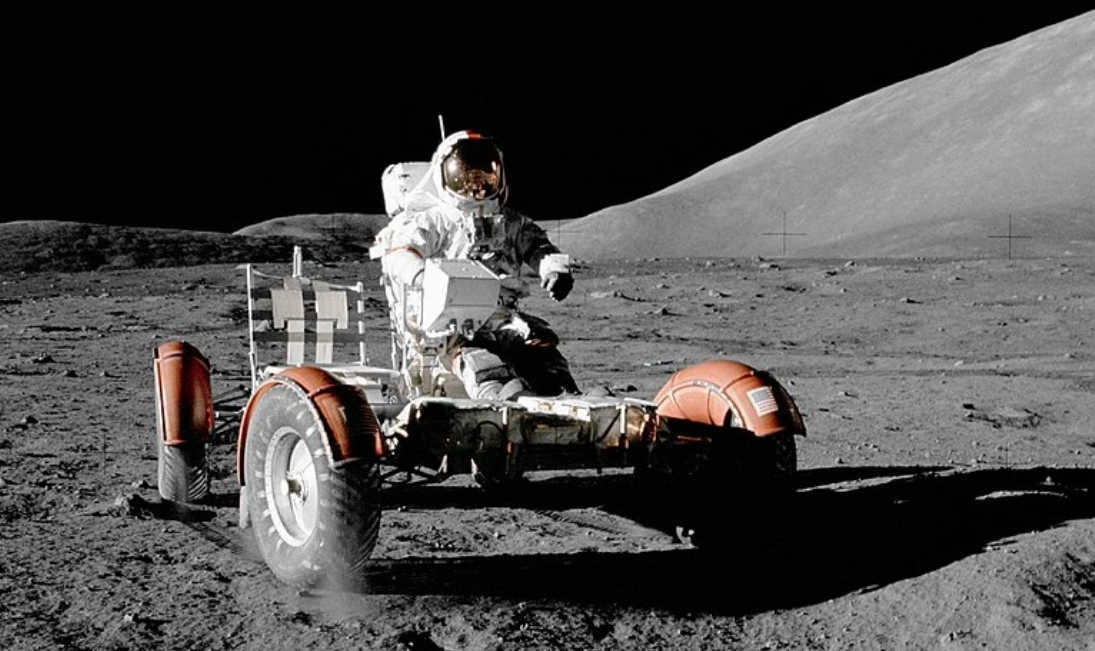
Subsequently, soil samples were transported back to Earth from the satellite for analysis, enabling researchers to gain insights into the Moon’s cooling and evolutionary processes.
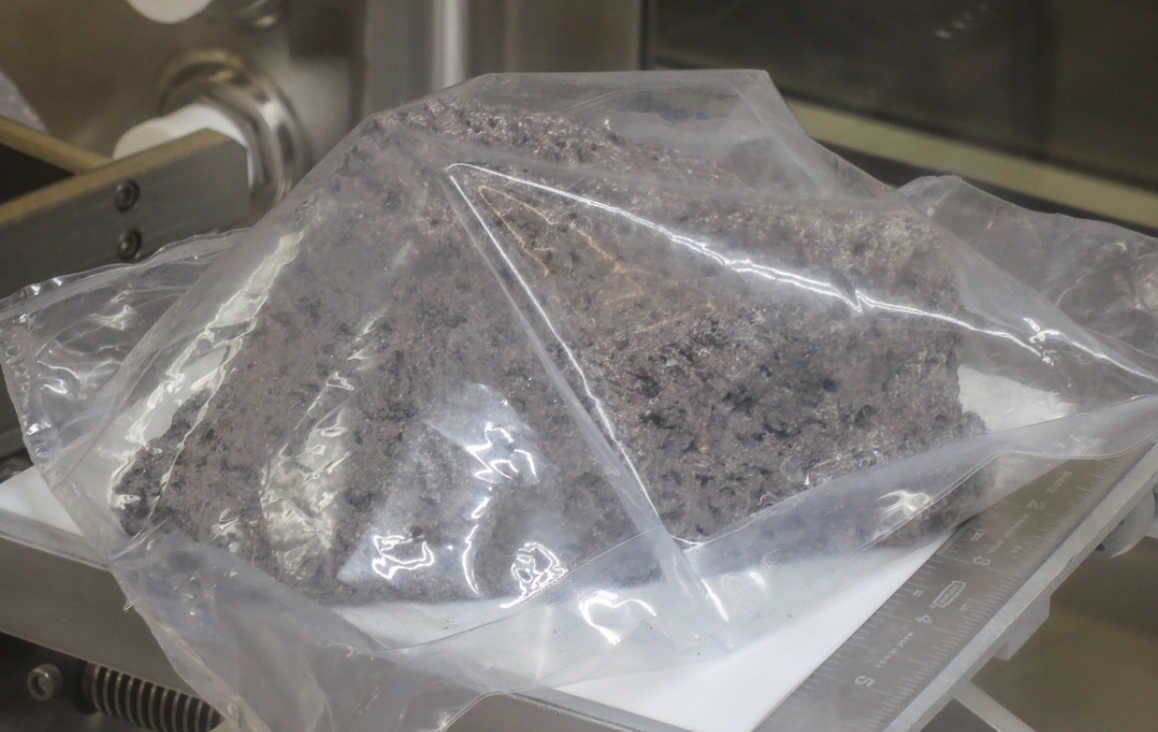
An American journal has recently published the findings, which reveal that the soil on the moon contains a significant concentration of phosphorus.
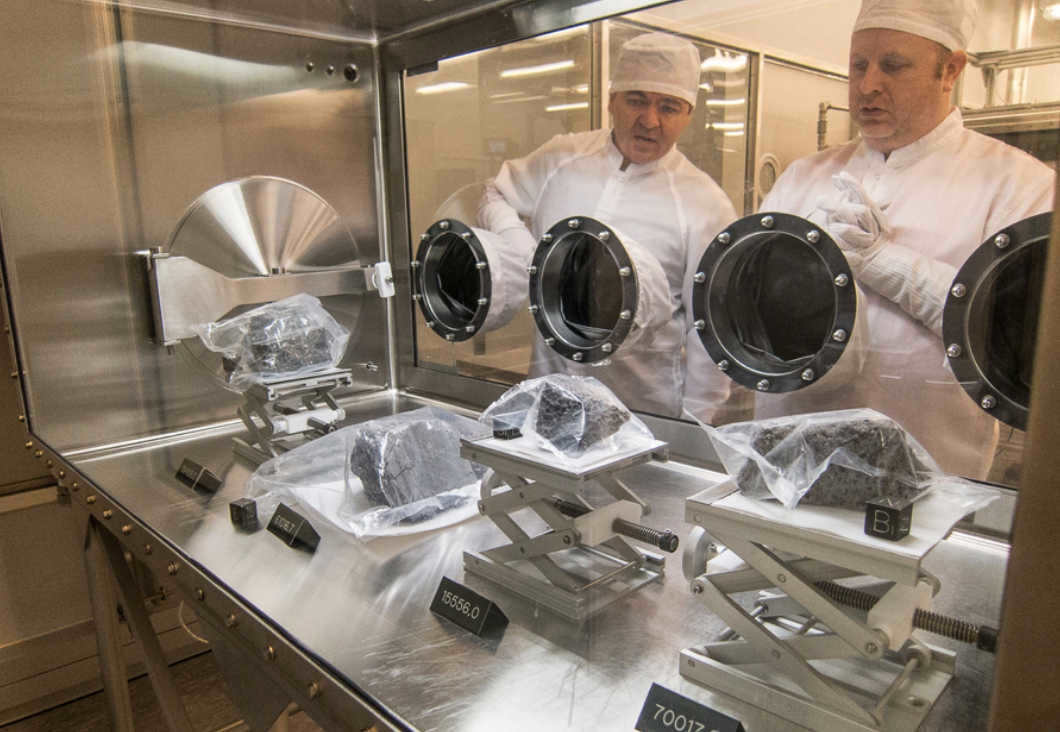
The Moon’s luminosity in the nighttime atmosphere is hardly surprising. Indications of diffusion suggest that the magma within the lunar crust undergoes rapid cooling.
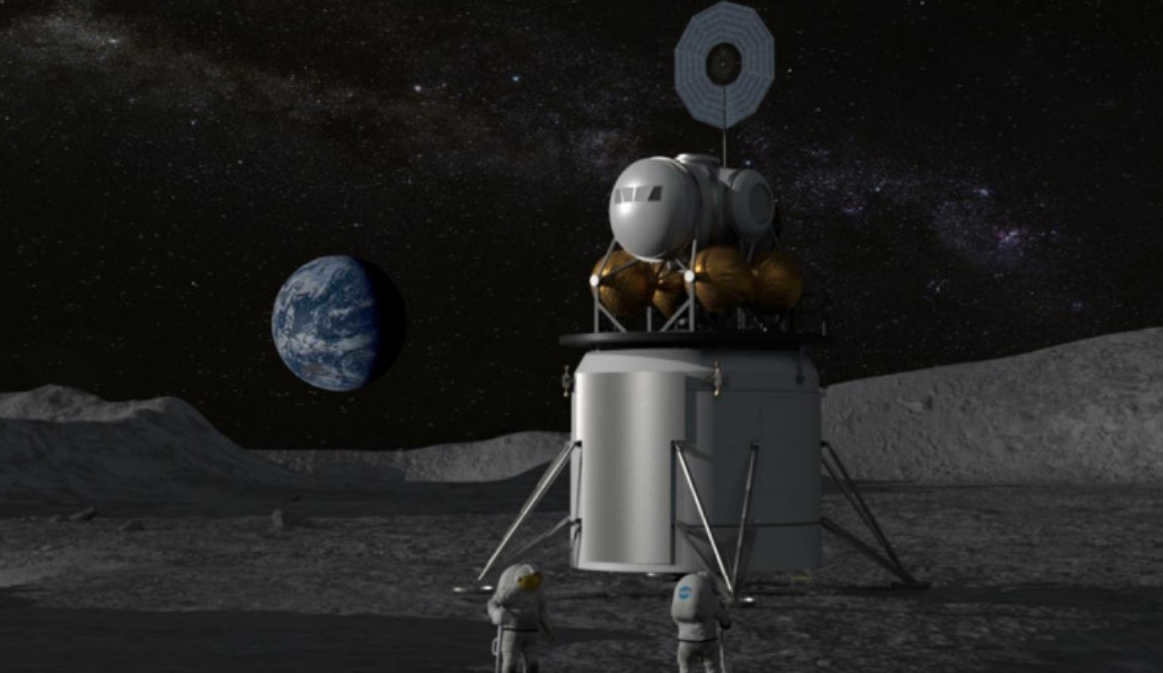
The cooling period spans a duration of 100 million years, which serves as a highly favorable indicator for a celestial entity. Utilizing this data, it has been feasible to ascertain that the initial process of development was intricate in nature.
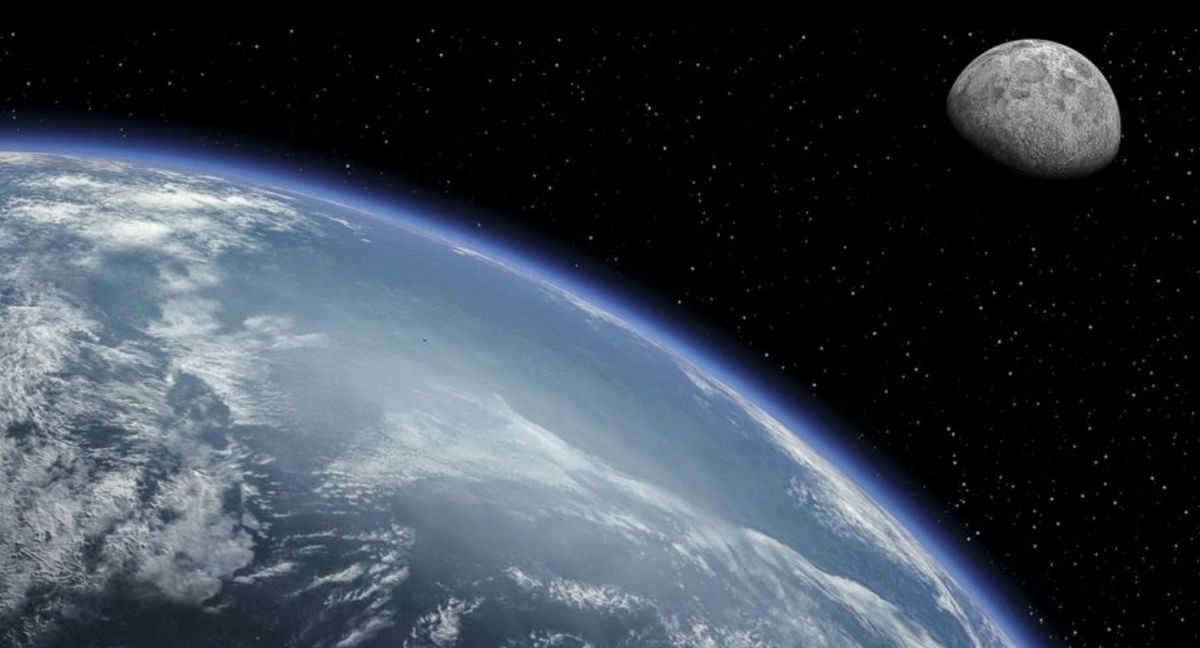
There is a significant chance, according to certain scientists, that the second stage of the Falcon 9 rocket may come into contact with the Moon.
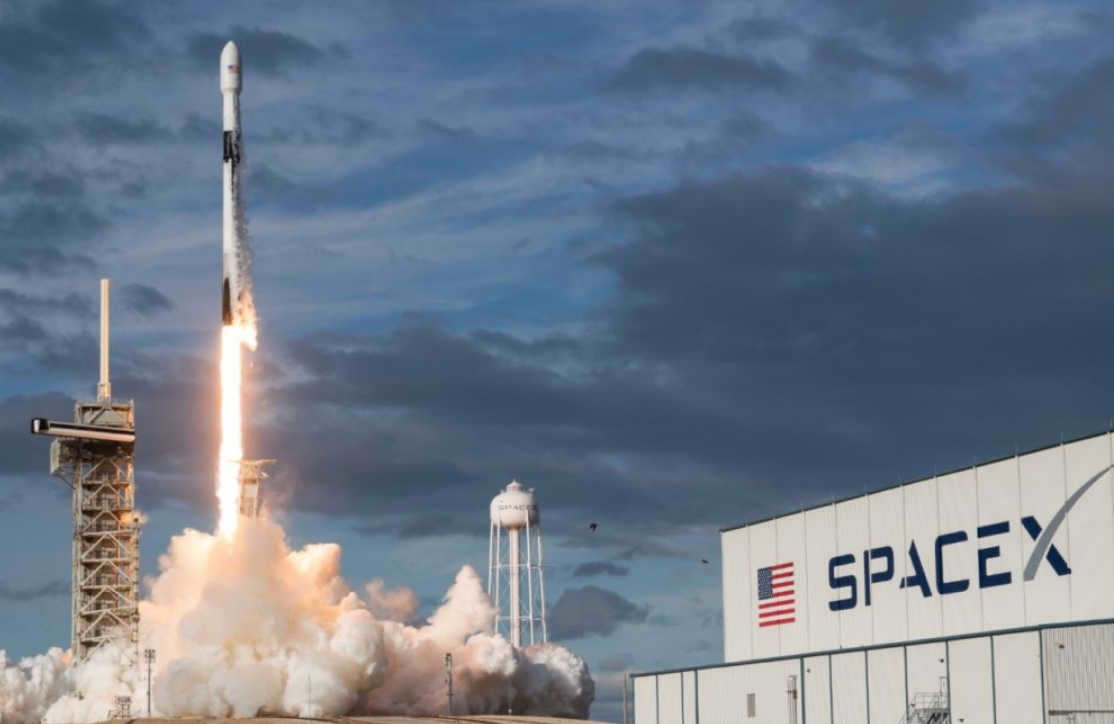
Based on calculations, this event is scheduled to occur in early March, specifically around 5:30 PM. A portion of the rocket will descend onto the far side of our celestial body.
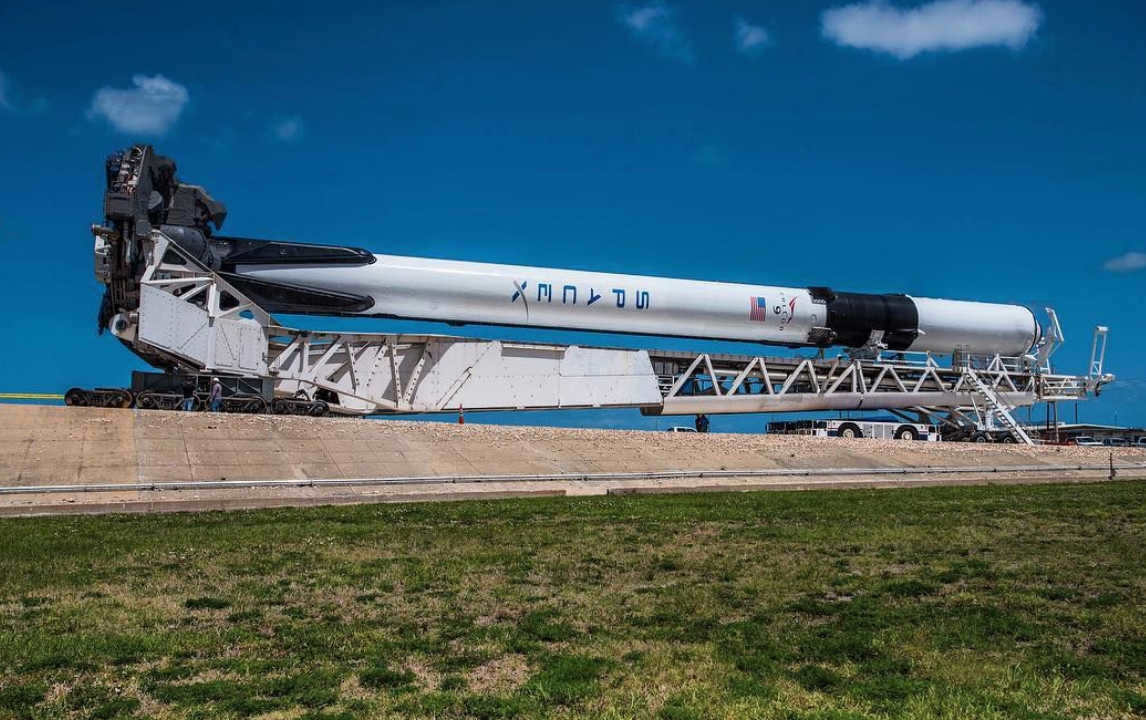
The impact will happen at a velocity of 2.5 kilometers per second. This event won’t be observable from the surface of the Earth. Nevertheless, there will be NASA’s hovering apparatus around our satellite.
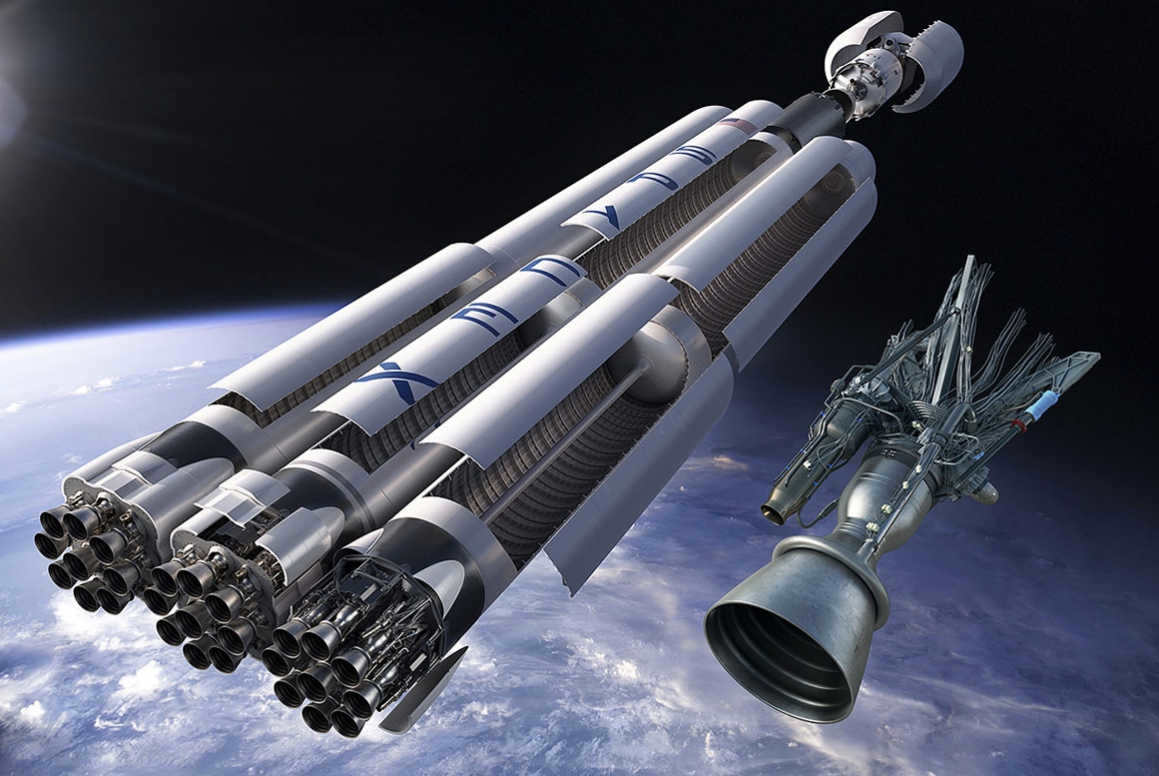
It is highly likely that they will capture the impact or the formation of a crater as a consequence. Subsequently, researchers will have the opportunity to analyze the substances that were concealed beneath the lunar surface.
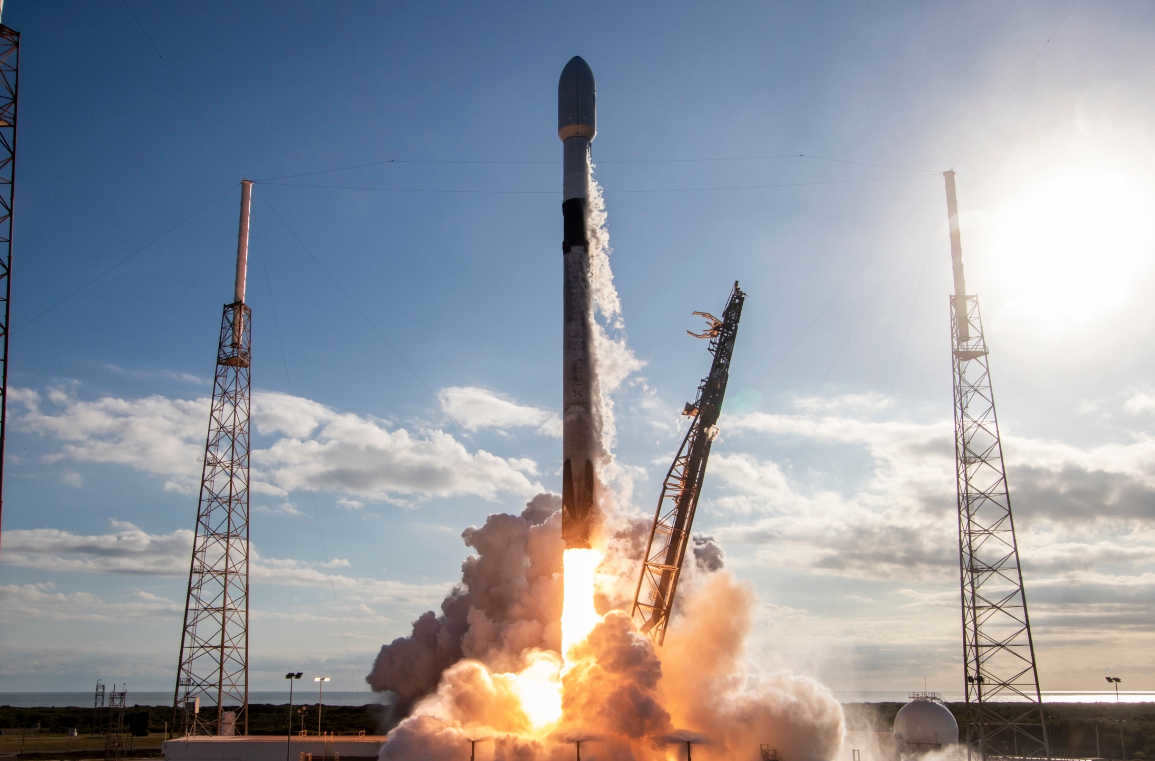
Researchers have successfully identified the formation of fresh craters on the lunar surface.
Approximately 100,000 new craters have been detected. This high number can be attributed to the limitations of machine analysis, which fails to recognize collapsed or irregularly shaped craters. To address this issue, a transfer learning approach was implemented.
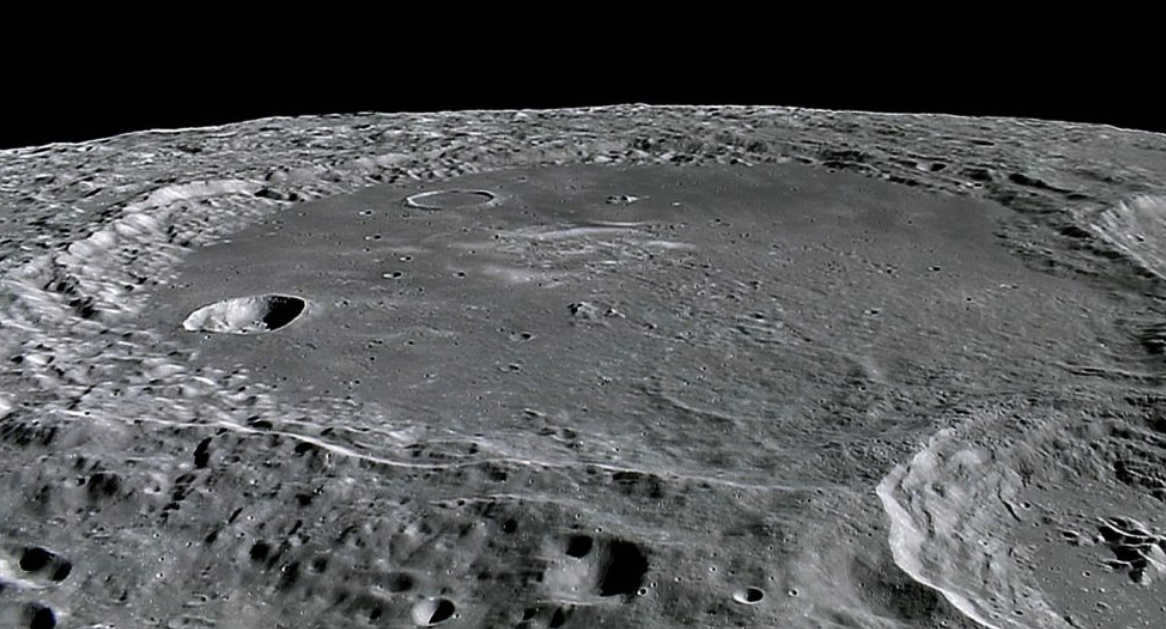
In the beginning, a network of neurons was unveiled by researchers, which was built upon existing craters. Following that, information collected by orbital vehicles was integrated into the model.
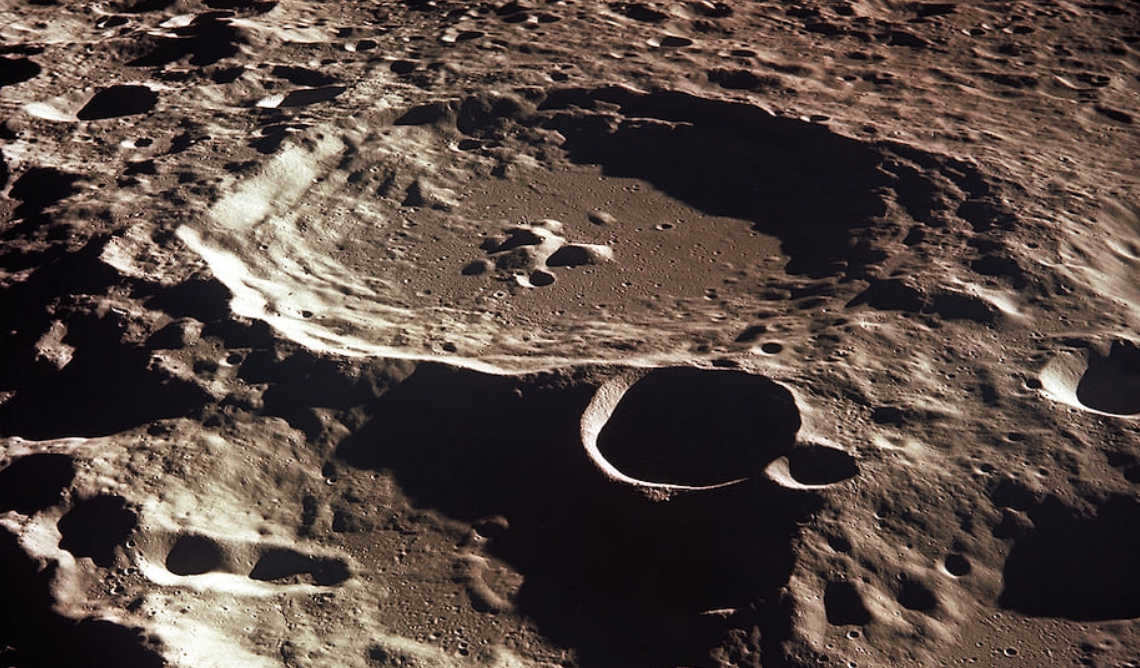
Utilizing the provided data, they managed to acquire nearly 100,000 fresh craters on the lunar terrain.
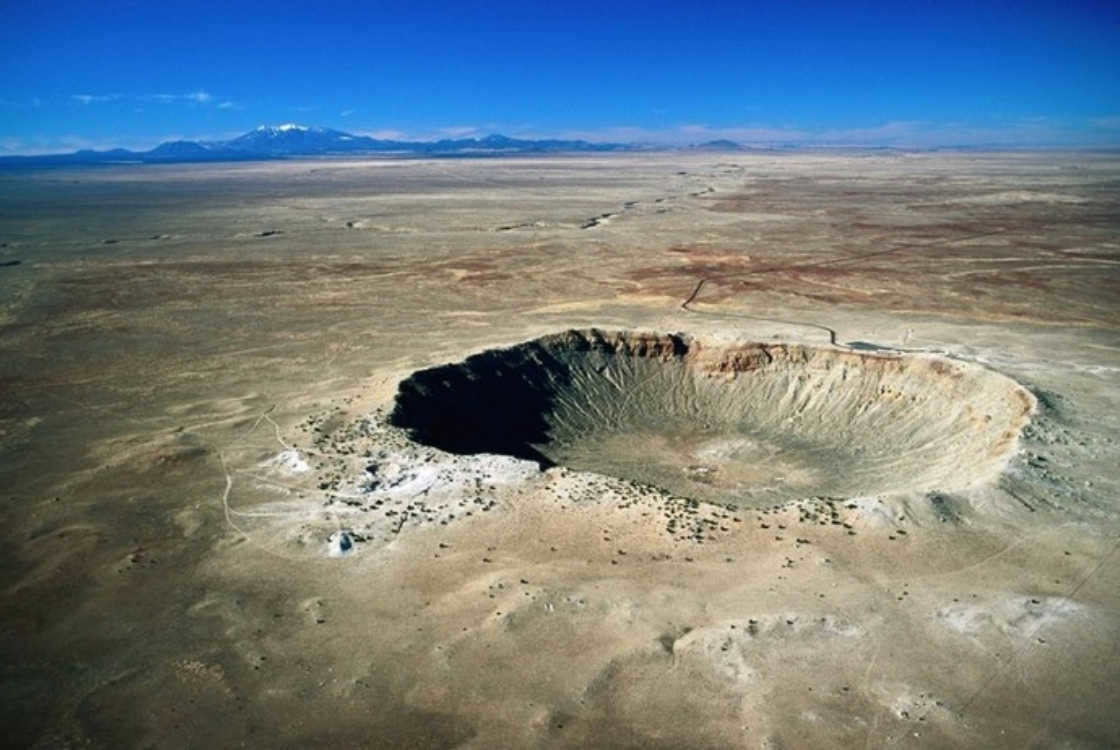
The number of newly discovered pits is nearly ten to fifteen times greater than what was previously known. In addition to determining the age of these pits, scientists have also been able to estimate their diameter, which is approximately 8 kilometers.
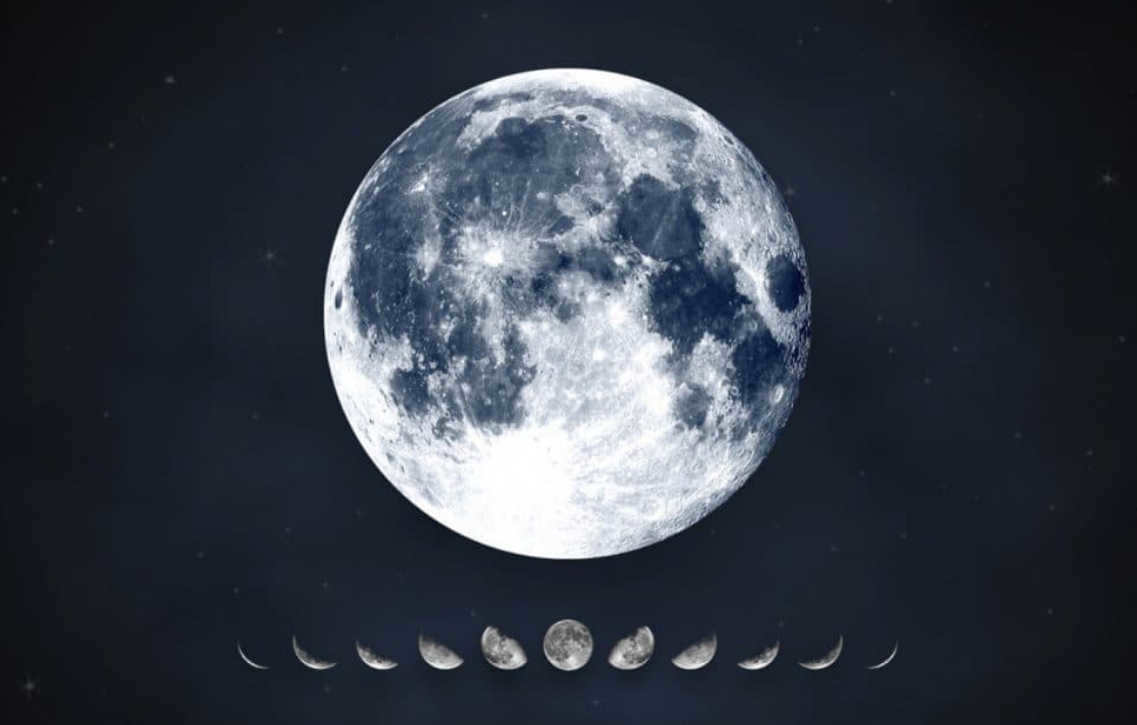
Photographs
It is possible to observe the Earth’s natural satellite during the night. During the full moon phase, it is even possible to spot dark spots, which are actually craters. You can explore more detailed photographs of the Moon.
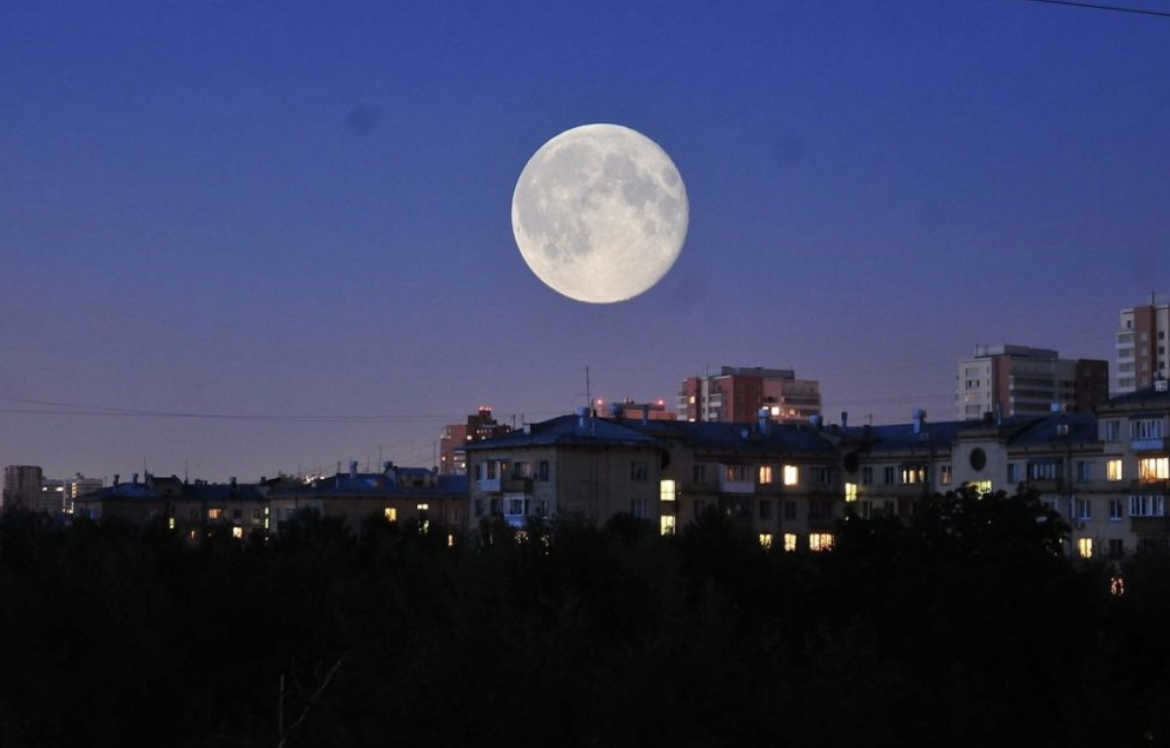
Understanding the nature of the Moon is beneficial – is it a typical planet or a distinctive celestial entity. The luminosity observed from Earth can be attributed to the significant presence of phosphorus on its surface.
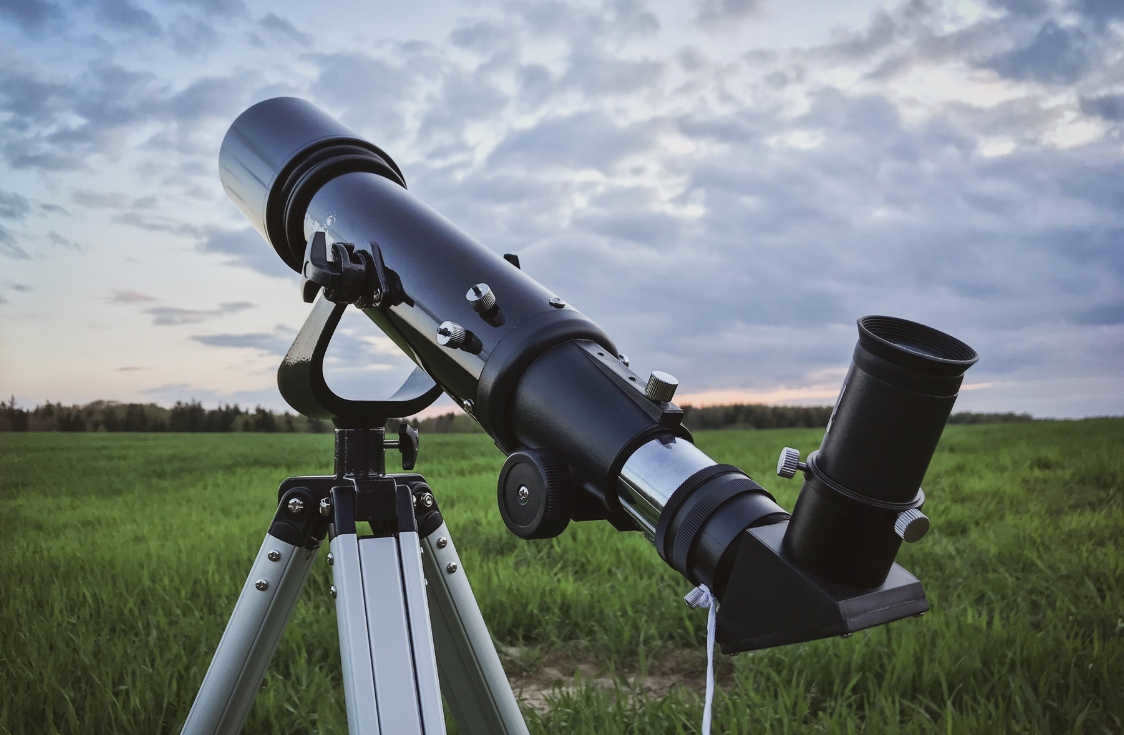
It can be confidently stated that scientists have only scratched the surface when it comes to studying the Moon. Therefore, every year brings forth new discoveries and information.
Every day, we have the privilege of witnessing the vast expanse of the night sky, including the Moon, our familiar celestial companion. The Universe encompasses the boundless material realm that surrounds us, both on our planet and beyond. The sheer magnitude of the Universe is so immense that it surpasses the comprehension of an average individual. As a result, astrophysics delves into intricate concepts that pertain to the dimensions of space and time.
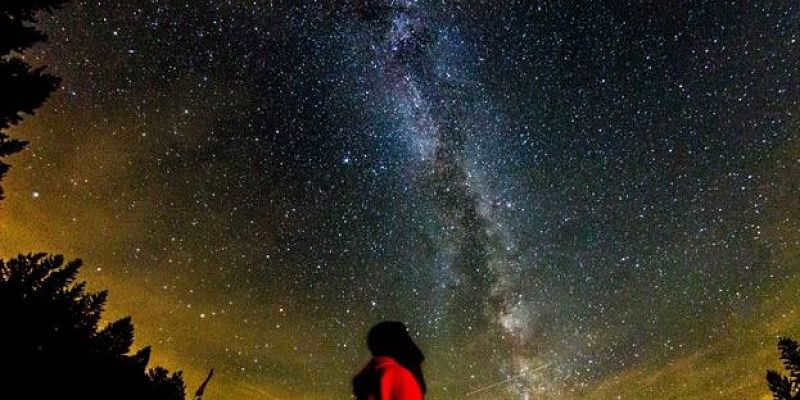
The Hubble and Kepler telescopes, designed and built by NASA, have provided mankind with the ability to view distant galaxies and clusters of gas. By utilizing state-of-the-art observatories located in high mountainous regions, we are able to observe over one hundred thousand stars in the visible spectrum. The visible universe, as seen through the lens of modern cosmological technology, is now accessible to the human eye.
What are the main theories explaining the origin of the Moon?
The Moon’s origin has been a subject of scientific debate for many years. There are several main theories that attempt to explain how this celestial body came into existence.
One of the most widely accepted theories is the Giant Impact Hypothesis. According to this theory, a Mars-sized body collided with the early Earth, causing debris to be ejected into space. Over time, this debris came together and formed the Moon. This theory is supported by the similarities in isotopic composition between the Earth and Moon, as well as the Moon’s relatively small iron core.
Another theory is the Co-formation Theory. This theory suggests that the Moon formed at the same time as the Earth, from the same cloud of gas and dust. The gravitational forces between the two bodies caused them to separate into the Earth and Moon. Evidence for this theory comes from the similarities in composition between the Earth and Moon, as well as the Moon’s synchronous rotation with the Earth.
There is also the Capture Theory, which proposes that the Moon was formed elsewhere in the solar system and was later captured by the Earth’s gravity. This theory is supported by the Moon’s relatively small size compared to the Earth and its unusual orbit around the Earth.
Overall, while there are several theories about the origin of the Moon, the Giant Impact Hypothesis is currently the most widely accepted explanation. However, further research and exploration are still needed to fully understand the Moon’s formation.
